For the Life of the World






I’ve spent the months since my election listening— to students, to faculty and staff, to board members, and to Concordia Theological Seminary’s supporters. These different voices have allowed me to see our seminary from myriad angles and provided new insights into our culture and those who inhabit it.
But there has been a commonality in what I’ve heard from everyone: people flock to CTSFW because of the kind of community that exists on our campus and because of our mission. That’s as true of staff as it is for faculty; as true of students as it is for our supporters.
In fact, you might say that the sense of community on campus and our mission go hand in glove. CTSFW is laserfocused on one thing: sending forth faithful pastors and deaconesses for robust ministry and diakonia in church and world. It’s that sense of purpose that draws together the community, gives it its strength, and pervades everything on the campus, from the classroom to Gemütlichkeit, and from Toastpastors to chapel.
While there’s no single element of campus life that is not calculated at shaping our graduates, one stands out in the mind of most, Kramer Chapel, the heartbeat and nerve center of our life together, where Christ with all His goods meets us. There, borne in the liturgy of the Divine Service, lies the sacramental treasure of the church; there, set within the rich tradition of Lutheran hymnody, sounds the Word.
And it is, indeed, a rich tradition. This issue of For the Life of the World takes advantage of the 500th anniversary of the birth of Lutheran hymnody to explore that tradition and extoll its perennial relevance in teaching the faith and shaping future workers of the church.
I’ll leave you with the words of a Luther hymn that I’ve singled out for special attention during my service as president, “May God Bestow on Us His Grace.” It’s my hope that our graduates will leave Fort Wayne with these words firmly imprinted in their hearts and minds as they teach the faithful, reach the lost, and care for all.
May God bestow on us His grace, With blessings rich provide us; And may the brightness of His face To life eternal guide us, That we his saving health may know, His gracious will and pleasure, And also to the nations show Christ’s riches without measure And unto God convert them. (LSB 823:1)

In Christ, Jon S. Bruss President Concordia Theological Seminary, Fort Wayne

To read Dr. Bruss’s inaugural address, visit his faculty page at ctsfw.edu/faculty.



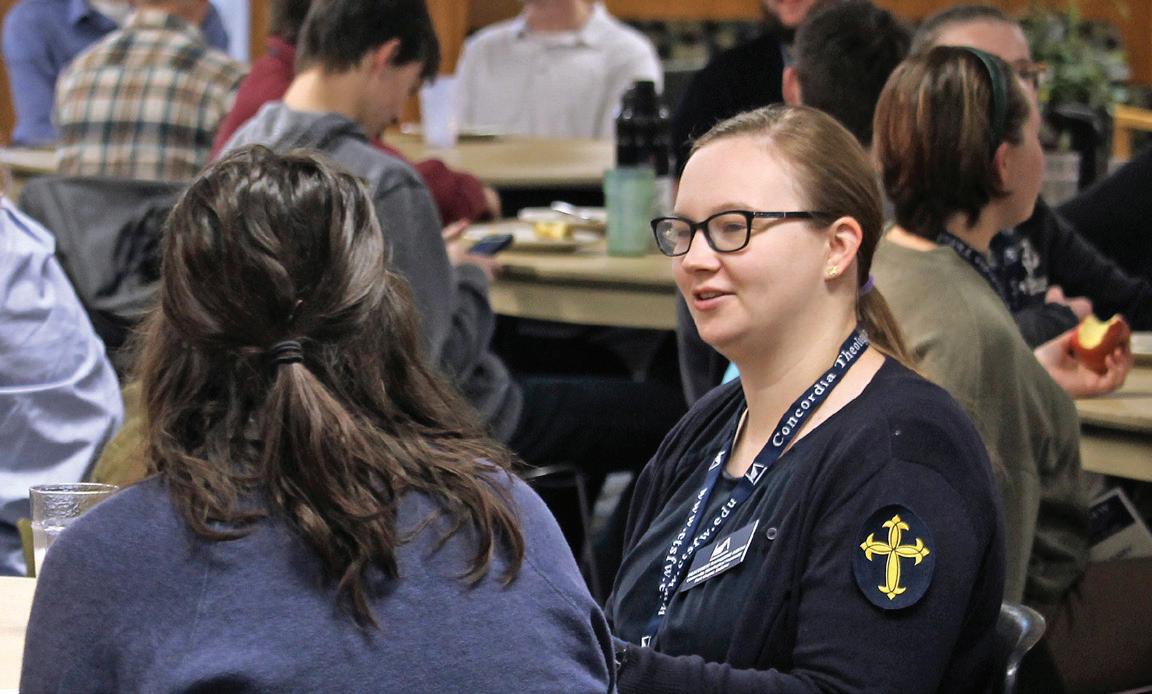
FALL 2024 VOL. 28, NO. 3
PRESIDENT JON S. BRUSS PUBLISHER
KRISTINE S. BRUSS
CARRIE M. O’DONNELL
EDITOR PUBLISHER ASSISTANT
COLLEEN M. BARTZSCH
STEVE J. BLAKEY
PRODUCTION MANAGER ART DIRECTOR
For the Life of the World is published by Concordia Theological Seminary Press, 6600 N. Clinton St., Fort Wayne, Indiana 46825. No portion of this publication may be reproduced without the consent of the editor of For the Life of the World by email at FLOW@ctsfw.edu or (260) 452-3153. Copyright 2024. Printed in the United States. Postage paid at Berne, Indiana.
SUBSCRIPTION INFORMATION:For the Life of the World is mailed to all pastors and congregations of The Lutheran Church—Missouri Synod in the United States and Canada and to anyone interested in the work of Concordia Theological Seminary, Fort Wayne. To manage your subscription, please email FLOW@ctsfw.edu or call (452) 260-2150.
Unless otherwise noted, all Scripture verses are from the English Standard Version (ESV).
Kevin J. Hildebrand
For Luther, music and theology are next to each other, not competing, but cooperating, and indicating how important this gift of music is and how diligently we should treat this astonishingly rich tradition in the church.
Andrew S. Gerike
That word “praise” is often used far too simply, as though it were the heaping of up of positive adjectives about God. A study of the Bible’s own hymns of praise reveal that true praise is proclaiming what God has done.
Stephen P. Starke
In 1999, I came across “O God, Beyond All Praising,” a hymn written by Michael Perry to the tune thaxted. It was then that the thought came to me that the Te Deum, that great confession of faith from the ancient Church, could possibly be versified to fit that tune. Such a strong tune could well carry such a strong text!
On the Cover
The chain of office, presented to new presidents at the time of their installation, features the seal of the Seminary with its motto, “Preach the Word” (2 Tim. 4:2) and the year of the Seminary’s founding, 1846. The president wears the chain of office at occasions requiring academic regalia, chiefly the opening service and commencement.
(Photo: Marcos Navarro)
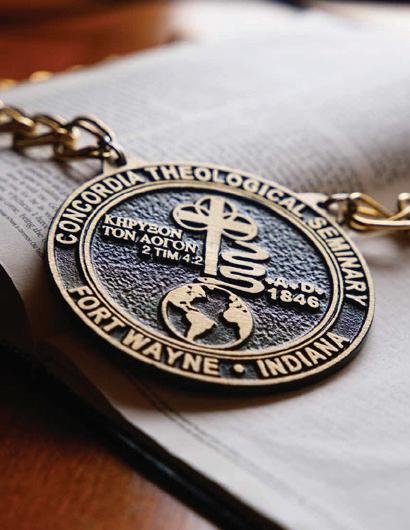


Dear Christians, one and all, rejoice, With exultation springing, And with united heart and voice And holy rapture singing, Proclaim the wonders God has done, How His right arm the vict’ry won. What price our ransom cost Him! (LSB 556:1)
By Kevin J. Hildebrand
As the church celebrates the 500th anniversary of the first Lutheran hymnals, the words from “Dear Christians, One and All, Rejoice,” one of Martin Luther’s earliest hymns, help introduce his views about music within the life of the church. His work as hymnwriter can help guide the church’s study and practice of church music in our own day.
In the first phrase of the hymn, Luther encourages the entire church to sing. For Luther, singing is not an option reserved for the select few, for only those trained in music, or for those who may have a certain predilection for singing. Instead, this directive to rejoice with singing is for the entire body of Christ. Our English translation of the text directs this to “Christians, one and all,” similar to Luther’s original German, “All und Ein” (all and one, that is, everyone all together as well as individually). No one is excluded from the invitation, just as the church sings in the Venite, “Come, let us sing to the Lord.” There aren’t conditions or preqrequisites. This singing is for you and for all.
Every culture in every time and place celebrates singing. In the Christian church, singing is more than merely an enjoyable activity (although it certainly should be). More significantly, the singing of the church’s song is proclamation of God’s grace and favor, his goodness and mercy, all shown in Christ Jesus. “Proclaim the wonders God has done,” Luther’s hymn states. CTSFW Kantor Emeritus Richard Resch taught many students this concise definition of a hymn: it is a sung confession of the faith. In fact, the remaining nine stanzas of “Dear Christians, One and All, Rejoice,” proceed with a strong sung confession.
An oft-quoted phrase of Luther is “music is next to theology.” He wrote this in two different letters, once in German, and once in Latin. The “next to” aspect of this phrase is important. Liturgical scholars Walter Buszin and

Robin Leaver provide further insight on the translation of these words.1 “Next” can mean “subordinate” or “next in line.” For example, I might be waiting in line at the CTSFW dining hall, and you are next, behind me. But “next to” can also mean a lateral relationship. I might be sitting in a pew in Kramer Chapel and you can sit next to me, side by side.
Both of these meanings are appropriate when considering Luther’s view of music. Nothing ever supercedes the Word of God, and our confession and practice (including music) are subordinate to God’s Word. However, for Luther, music and theology are also next to each other, or as Buszin explains, “beside each other,” not competing, but cooperating, and indicating how important this gift of music is and how diligently we should treat this astonishingly rich tradition in the church. 2
Luther wrote the following in the preface to a 1538 volume of church music:
It was not without reason that the fathers and prophets wanted nothing else to be associated as closely with the Word of God as music. Therefore, we have so many hymns and Psalms where message and music join to move the listener’s soul, while in other living beings and instruments music remains a language without words.
After all, the gift of language combined with the gift of song was only given to man to let him know that he should praise God with both word and music, namely, by proclaiming [the Word of God] through and by providing sweet melodies with words. 3
Luther states that music “moves the listener’s soul.” That is true, but many things can move the soul, even music intended for purposes other than the proclamation
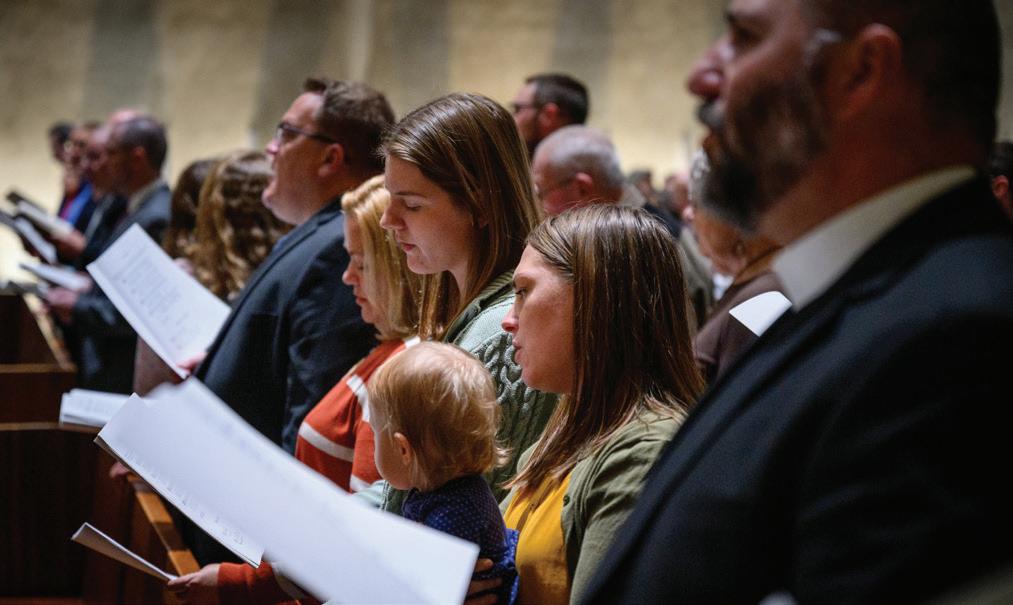
of God’s Word. So what is the listener’s soul moved to?
The ultimate purpose of music, Luther concludes, is “to praise God with both word and music, namely, by proclaiming [the Word of God] through and by providing sweet melodies with words.”
Let’s read that last phrase again with some further explanation. Luther writes that man should:
@ Praise God [part of the Christian’s vocation]
@ With both words and music [the methods used in such praising of God], namely,
@ By proclaiming the Word of God [another part of the Christian’s vocation]
@ Through and by providing sweet melodies with words [how the proclamation happens].
For Luther, the Christian is called to “praise God . . . by proclaiming the Word of God.” To praise God and to proclaim God’s Word are one and the same. God is praised when his Word is proclaimed, and God’s Word is proclaimed when He is praised. This happens most significantly in the church’s song––in hymnody, liturgy, canticles, and vocal and instrumental music, especially within the Divine Service. In her song, the church praises God by proclaiming His Word, and the church proclaims God’s Word when He is praised.
Luther wrote about forty hymn texts. Some of them, like “Dear Christians, One and All, Rejoice,” were new and original texts. But some of Luther’s hymns were based on Latin hymns of the early church, such as his translation of Ambrose’s “Veni, redemptor gentium,” which we know as “Savior of the Nations, Come” (LSB 332), or hymns based on medieval German hymns, including “Christ Jesus Lay In Death’s Strong Bands” (LSB 458). In early Lutheran hymnals, hymns like these were headed with the German word gebessert, meaning “improved” or “made better.” Luther was firmly rooted in the church’s tradition, and he didn’t throw out pre-Reformation song. Instead, he updated some of the errant theology in the text and sometimes altered a chant melody to make it more conducive to congregational singing.
On the other hand, the hymnals of 1524 and beyond did not include only pre-Reformation hymns that had been made gebessert. Luther, assisted by Kantor Johann Walter and other like-minded hymnwriters and composers, kept adding to the church’s song within the church’s tradition. This view of church music paved the way for a wealth
of hymnic and liturgical treasures in the Reformation era and beyond. Thousands of hymns were written, and many musical settings of the Divine Service were used in congregations. Composers wrote organ, choral, and instrumental music based on this growing repertoire of hymn tunes and liturgical music.
This is the ever-expanding tradition of church music that Martin Luther modeled in his hymns and liturgical writing. Here the church’s song is never merely old or new, but faithful, thriving, and innovative. Hymnody never stops. Church music on this side of heaven is never finite or complete. Hymnwriters continue to create texts for the church to sing, and composers continue to craft melodies and musical settings for this proclamation. Daily chapel at CTSFW and the annual hymn festival at the Good Shepherd Institute are testimonies to this. (See page 13 for details about a new recording of hymns from CTFSW). One of our hymnal’s prefaces called Luther’s legacy of church music an “astonishingly rich tradition” (Lutheran Worship, CPH). Whether it’s new arrangements of old hymns or new songs yet unwritten; new original texts or new translations of older resources, it is the church’s responsibility both to maintain and to contribute to this astonishingly rich tradition.
The CTSFW community sang “May God Bestow on Us His Grace” at the opening service of this academic year, and the third stanza is a fitting conclusion to our consideration of Luther’s views of music in the church, as we praise the Triune God by proclaiming the wonders He has done.
O let the people praise Thy worth, In all good works increasing; The land shall plenteous fruit bring forth, Thy Word is rich in blessing. May God the Father, God the Son, And God the Spirit bless us! Let all the world praise Him alone, Let solemn awe possess us.
Now let our hearts say, “Amen!” (LSB 823/824:3)
1 Robin Leaver, Luther’s Liturgical Music: Principles and Implications, 65; 373, note #1.
2 Kirby Koriath, Music for the Church: The Life and Work of Walter E. Buszin, 222.
3 Georg Rhau’s Symphoniae Iucundae, Wittenberg, 1538. See LW 53:321 ff.

Mr. Kevin J. Hildebrand serves as Kantor and Co-Director of the Good Shepherd Institute at Concordia Theological Seminary, Fort Wayne.
True praise is proclaiming what God has done.
By Andrew S. Gerike
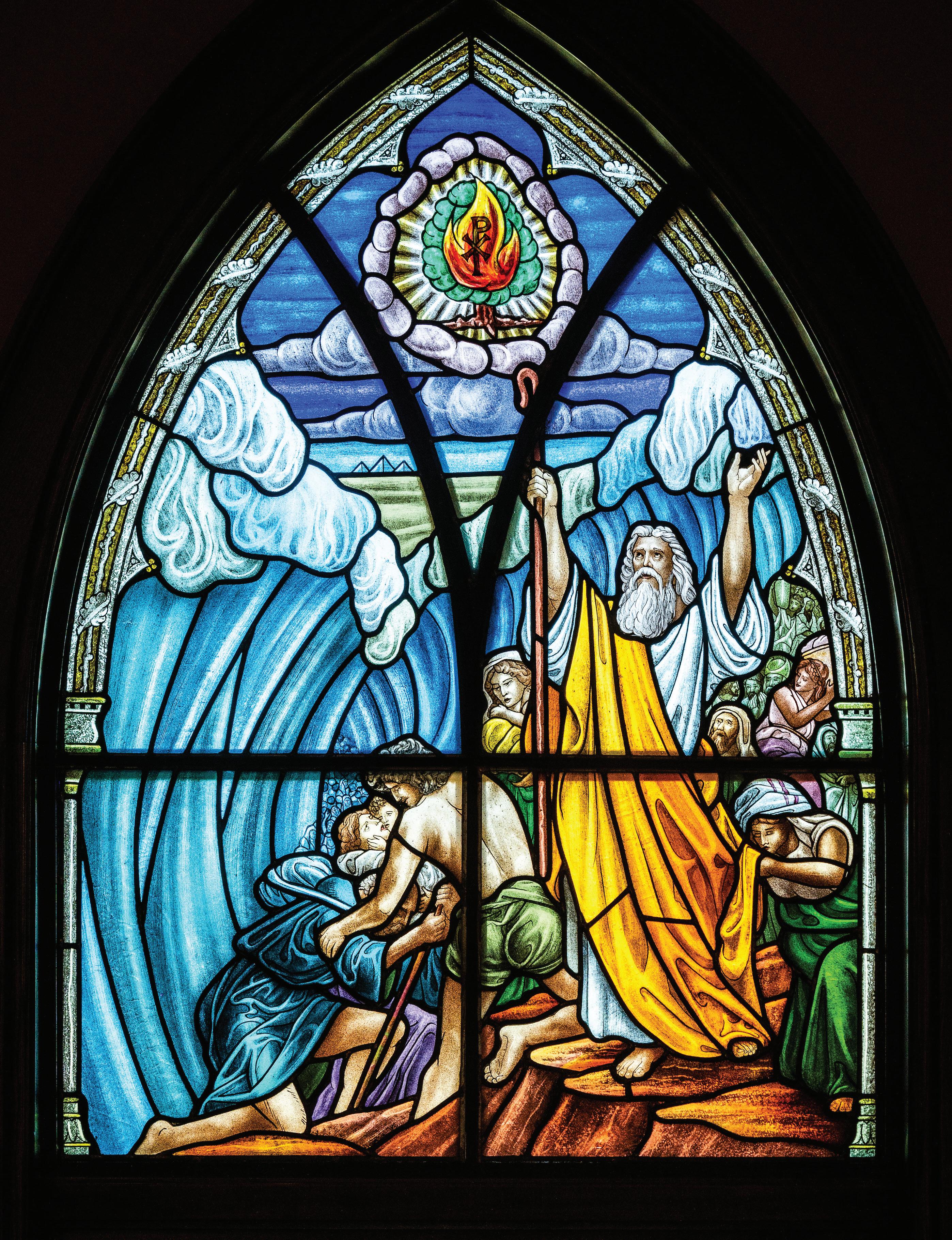

The psalmist calls upon everything that has breath and all creation to praise the Lord (Ps. 150:6; 148:1–5). Most especially God’s people are bidden in many of the psalms to praise Him (Ps. 111–113, 115–117, 146–150). They are directed to thank Him through the making of music with skill: “Give thanks to the Lord with the lyre; make melody to Him with the harp of ten strings! . . . Play skillfully on the strings, with loud shouts” (Ps. 33:2, 3b). Above all, they are exhorted to sing unto Him, as the familiar words of the Venite from Matins begin in Psalm 95:
Oh come, let us sing to the Lord; let us make a joyful noise to the rock of our salvation!
Several other psalms and passages call upon God’s people to sing unto the Lord (Ps. 33:3; 96:1; 98:1; Eph. 5:16; Col. 3:16), and many of the superscriptions to the psalms make plain the intention that they were to be sung.
ministry and prepares Israel to cross over the Jordan into Canaan. He does as St. Paul will later bid the church in Colossians. He teaches Israel as he reviews the history of their fathers in the wilderness. He admonishes them with the warning against imitating the stubborn unbelief of that generation. He calls them to the true wisdom that sees and believes in the only God who kills and raises, who wounds and heals (Deut. 32).
Upon God’s gift of a son to her, and in remarkable anticipation of Mary’s own song of praise (Luke 1:46–55), Hannah sang of God’s graciousness. She echoes Moses’ earlier teaching in song of how God works through the cross of suffering to raise up the lowly:
The Lord kills and brings to life; He brings down to Sheol and raises up.
“A study of the Bible’s own hymns of praise reveal that true praise is proclaiming what God has done.”
As the Lord through the Scriptures bids His people to sing and give praise, so they do, moved by the Holy Spirit to open their lips and declare His praise. That word “praise” is often used far too simply, as though it were the heaping up of positive adjectives about God. (Consider the familiar Sunday School song “My God Is So Great”; our God is certainly “so great, so strong, and so mighty, there’s nothing [our] God cannot do.”) A study of the Bible’s own hymns of praise reveal that true praise is proclaiming what God has done. We see this throughout the psalms as David, Asaph, and others recount the saving works of the Lord for His people Israel as a whole and for themselves as individual believers.
Israel did not just do this as she sang the hymns and prayers of the psalter, however. We see the scope of Israel’s praise and the depth of content in that praise in other places, as well. Scattered throughout the Old Testament, in close proximity to some of God’s greatest works of salvation, are the Old Testament canticles. The Old Testament canticles are hymns outside the psalter.
Moses led all Israel in singing to the Lord, praising Him for His destruction of Pharaoh’s host and for leading His people in steadfast love (Ex. 15). No mere heaping up of adjectives here! It is a concrete recounting of the greatest act of deliverance in the Old Testament. Moses does the same, yet again, as he nears the end of his
The Lord makes poor and makes rich; He brings low and He exalts. He raises up the poor from the dust; He lifts the needy from the ash heap. (1 Sam. 2:6–8a)
Hannah then ends with a stunning messianic prophecy of God’s appointed King. (Remember, this is before the institution of Israel’s monarchy through Samuel.) She speaks plainly of the Anointed One whom Mary would bear one thousand years later:
The Lord will judge the ends of the earth; He will give strength to His King and exalt the horn of His Anointed. (1 Sam. 2:10b)
The Latter Prophets also give voice to Israel’s songs of praise. Early on in Isaiah’s prophecy, he gives God’s own declaration of what His people will not just say but sing because of His glorious deeds of salvation (Isaiah 12:1–6). Habakkuk’s prayer that concludes his prophecy ends with a note for the choir director (3:19), indicating a musical use for this resounding confession of God’s power over creation and, even more, His redemptive activity for His people. Hearkening back to the first messianic prophecy of Genesis 3:15, Habakkuk makes clear that the salvation spoken of here is far beyond deliverance from mere earthly powers:
You went out for the salvation of Your people, for the salvation of Your anointed.
You crushed the head of the house of the wicked, laying him bare from thigh to neck. (Hab. 3:13)
These songs (and others) of Israel’s praise were taken up along with the psalms by the early church and were a regular part of daily prayer. What they did for ancient Israel, they continued to do for the Christian church.
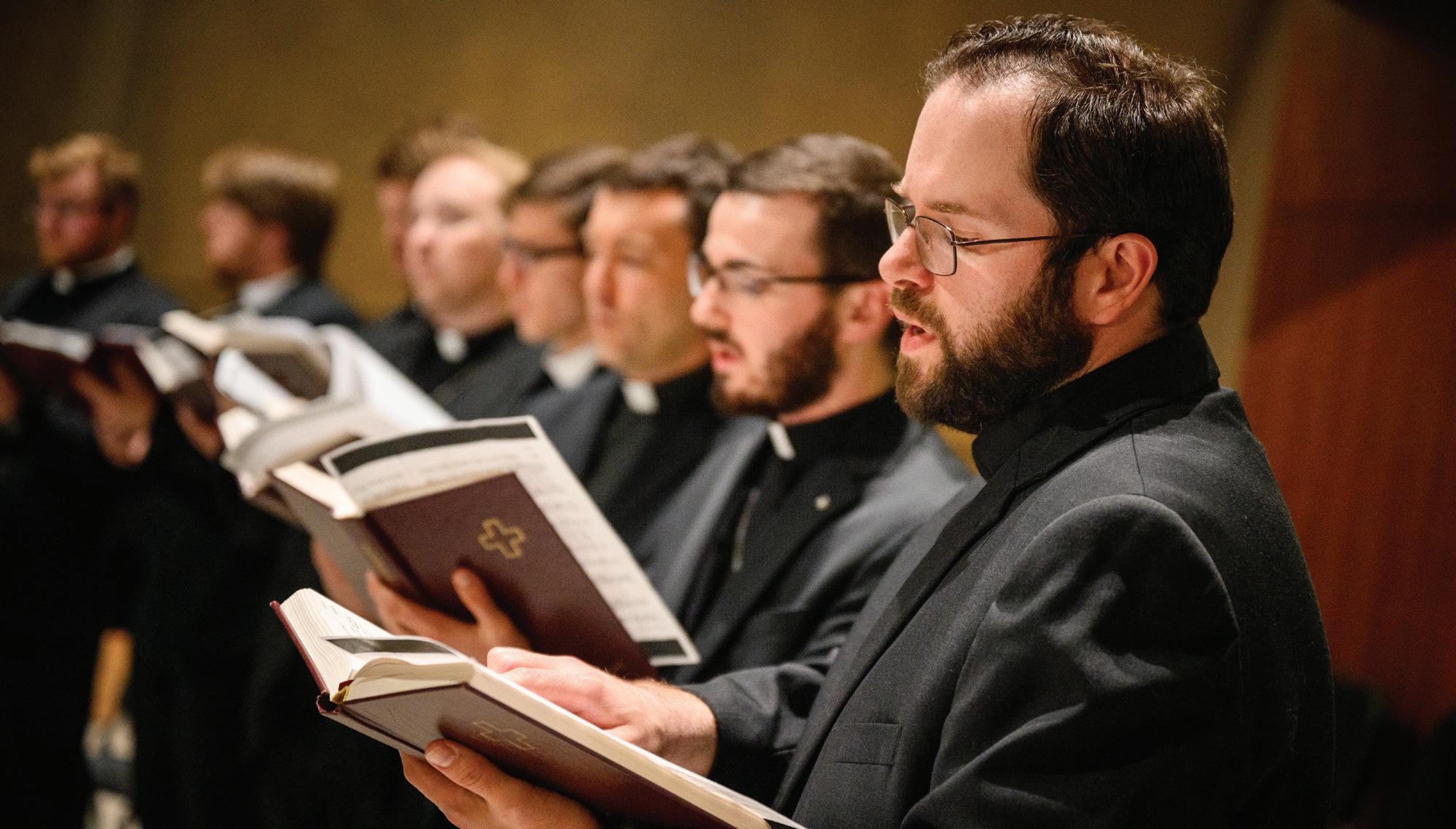
Namely, they taught the history of God’s people in song. They also taught the faith by preaching repentance, God’s gracious forgiving of His people’s sins, and His delivering His people from their enemies.
As the Lutheran Reformation began to produce hymnals, the traditional Old Testament canticles, as well as some other poetic and hymnic passages from Judges, Isaiah, and Jonah, were included as biblical patterns of true praise, at Luther’s own behest. Several of the classic and some newer Old Testament canticles are included in the pew edition of Lutheran Service Book (925–929), with still others available through Lutheran Service Builder (983–986). Luther’s hymns and the Lutheran chorale tradition he inspired exemplify true Christian praise. They teach God’s Word, especially the Gospel of our Lord Jesus Christ, who is the fulfillment of all the promises given to Israel. By shedding His blood as the sacrifice for our sins, we have full redemption and deliverance from all our enemies. This emphasis may be the unique focus of Lutheran hymnody, but the songs of the Lutheran church clearly take their cue from the songs of Israel:
I will sing to the Lord, for He has triumphed gloriously . . . The Lord is my strength and my song, and He has become my salvation . . . Your right hand, O Lord, glorious in power, Your right hand, O Lord, shatters the enemy.
(Ex. 15:1a, 2a, 6).
Dear Christians, one and all rejoice, With exultation springing, And with united heart and voice And holy rapture singing, Proclaim the wonders God has done, How His right arm the vict’ry won. What price our ransom cost Him! (LSB 556:1)
Why sing the psalms? Why sing these other portions of Old Testament Scripture? Because as Christians we recognize that as God has done for His ancient people, so has He done for us in His Son. The God who called Israel out of slavery in Egypt, who led them through the wilderness and into the Promised Land, who provided for them all the way, and delivered them from the hand of their enemies, that God is none other than the God whom we worship and praise: the Holy Trinity. This is why the early church and we today affix the Gloria Patri to the ending of each of the psalms and canticles when we pray them. The songs of God’s holy Church in ancient Israel are indeed the songs of the holy Church today.

The Rev. Andrew S. Gerike is pastor of Mt. Calvary Lutheran Church in Omaha, Nebraska.
By Stephen P. Starke
It was 1997, and I was serving on the hymn selection committee for Hymnal Supplement 98. The British patriotic hymn, “I Vow to Thee, My Country,” set to the tune thaxted, had been submitted to the committee for possible inclusion in HS98. I recognized that the tune was from “Jupiter” in Gustav Holst’s The Planets, but I had never before considered it as a tune for a hymn. thaxted was on my mind as I flew back to my parish in Connecticut. Also on my mind was a seven-stanza text on the church year by the 20th-century German hymn writer, Jochen Klepper: “Du bist als Stern uns aufgegangen” [Das Kirchenjahr]. On that flight back to Middletown, I began drafting my first text to the tune thaxted, “O Christ, Our Star of Radiance,” a four-stanza condensation of Klepper’s text:
1. O Christ, our star of radiance, of promise in the night, O rising Star of Jacob, aglow with God’s own light, Though mist and darkness shroud us, Your light shows us the way, A beam of brilliance blazing a path that leads to day; We follow to a stable, astonished by Your birth: Your meteoric glory enfleshed with us on earth!
2. Across Your life, O Savior, loom shadows of great loss: Of Golgotha and suff’ring, of cruelty and cross. For us, the lost and straying, You bowed Your sinless head And from the cross Your body was caverned with the dead. Then we, with oil and spices in early morning gloom, Hear news that You have risen and see Your empty tomb.
3. Your wounds, dear Lord, invite us to touch Your heart of love; Too soon Your mighty presence returns to God above. While left on earth behind You, not orphaned in this place, For to our weakness sending Your Comforter of grace: The fire none can extinguish, the wind none can exhaust, The promised Holy Spirit, poured out on Pentecost.
4. Through words You gave us, Jesus, our Father You reveal; With bread and wine You feed us where You are host and meal. Each day You gently lead us, drawn deeper in Your Word, As fruits of faith within us are nurtured and matured Until that time You take us, or when You come again, When all our hymns will blend in an infinite “Amen!”

After completing this text in 1998, I mentally laid aside the tune thaxted, but not for long.
In the time before I wrote “We Praise You and Acknowledge You, O God” in 1999, I came across “O God, Beyond All Praising,” a hymn written by Michael Perry to the tune thaxted. In Perry’s text, God is transcendent (beyond all praising); we on earth worship, wonder, honor, adore, bless, marvel, and make it our joyful duty to offer our sacrifice of praise to God. My response: “This hymn is really about us and says very little about God! God is not so far removed from us and not beyond all praising. He is immanent! God has come near to us in Christ Jesus, the incarnate Word made flesh, Immanuel—God with us.”
It was then that the thought came to me that the Te Deum, that great confession of faith from the ancient Church, could possibly be versified to fit the tune thaxted. Such a strong tune could well carry such a strong text! In retrospect, I believe that is why “We Praise You and Acknowledge You, O God” (LSB 941) has been so wellreceived. The text and the tune fit together hand in glove. Such a marriage of strong text and supportive tune is true of all enduring hymns.
“God has come near to us in Christ Jesus, the incarnate Word made flesh, Immanuel— God with us.”
In contrast to Perry’s text, my Te Deum versification is not about a God beyond all praising, but rather the God who has revealed Himself in Holy Scripture, the God who is Lord over all, the Father everlasting, adored by the angels, the thrice-holy Lord God Sabaoth whose “majesty and glory fill the heavens and the earth!” The apostles, prophets, and martyrs join the angels’ praises in glorifying the Triune God. We, too, join in this song of praise, which finds its salvific focus in Christ, the King of glory, the everlasting Son, who condescends to save us as the incarnate One, finally crucified for us and raised for us, who “opens heaven’s kingdom to all who would believe.”
The Te Deum versification concludes with the eyes of faith seeing the ascended Son of God seated at the right hand of the Father, upholding all things by His omnipotence and with the heart of faith confessing Christ as the One who will come again as Judge on the Last Day. This hymn of praise and confession of faith joyfully ends
with prayerful confidence that we will be kept in this true faith unto life everlasting and numbered among the saints in glory by God’s grace!
I have many memories connected to “We Praise You and Acknowledge You, O God.” It has been sung at special worship services through the years on a variety of occasions. It was sung at our daughter’s wedding as the opening hymn, before which she and I processed down the aisle to John Behnke’s Prelude on thaxted, with John himself at the organ! I once met a student from Concordia University Chicago who loved this hymn so much that her friends threw her an “LSB 941-themed” birthday party.
Perhaps the most surprising request I have had for the use of this text came from a Reformed pastor on the East Coast, who called me and identified himself as a Calvinist. He really liked this text and wanted to use it, but he wanted to make this one change: instead of “Yet You, with boundless love, sought to rescue everyone” in the second line of the third stanza, he wanted to change it to read “Yet You, with boundless love, sought to rescue all Your own.” This change would have reflected his Reformed perspective of double predestination and his belief that Christ died only for those elected to heaven. Of course, being a good Lutheran pastor, I strongly refused his request!
I had thought that four stanzas were most likely all the text that the tune thaxted could bear at one singing. In 2019, however, I received a request from Historic Trinity Lutheran Church in St. Louis to add a fifth stanza to “We Praise You and Acknowledge You, O God” for use on the occasion of their 180th anniversary. The resulting text, “Lord, Save Your People,” is the versification of the remaining lines of the Te Deum, known as the Salvum fac populum tuum:
5. Lord, save Your people—blessings on Your heritage outpour; Uplift and govern them by grace, both now and evermore. We magnify You daily, as we glorify Your Name.
O grant, dear Lord, to keep us this day from sin and shame. Your mercy be upon us, Lord; our trust in You is sound.
In You, Lord, have I trusted; let nothing me confound.
When the recent Spanish Lutheran hymnal, Himnario Luterano, was published, I learned that two of my hymn texts had been chosen for inclusion, one of which was a Spanish translation of “We Praise You and Acknowledge You, O God,” by Roberto A. Weber (b. 1990): “Señor, a Ti la gloria” [HL 1001]:
1. Señor, a Ti la gloria, la honra_y bendición
La tierra toda, Padre, te rinde_adoración
A Ti cantan los cielos, los ángeles al son, Con ellos nos unimos, cantando_en communión”
“¡Oh, santo, santo, santo, Señor de Sabaot! Los cielos y la tierra, Tu gloria los llenó.”
2. Apóstoles en gloria te_alaban sin cesar; Profetas, junto_a ellos, sus voces han de_alzar.
Los mártires unidos te_alaban a_una voz; Con ellos hoy tu_iglesia, cantando marcha_enpos:
“La majestad al Padre, y_al Hijo, y_a su don, Espiritu divino, Un santo_y trino Dios.”
3. ¡Oh, Cristo!, Rey de gloria, eterno_Hijo de Dios, Que por misericordia rescate_a todos dio:
Dejaste Tú la gloria, para de virgen nacer, Y_en cruz Tú moriste para perdón traer.
Mas hoy Resucitado venciste_¡Oh Salvador!, Los cielos has abierto, ¡Bendito Redentor!
4. Al cielo Tú_ascendiste, del Padre_en diestra_estás, Sostienes cielo_y tierra, por siempre reinarás.
Vendrás el postrer día, Juez nuestro has de ser, Por fé, Señor, rogamos, sin nada merecer: Que_entre tus santos cuentes tus siervos hoy aquí, Para cantarte siempre, Eternamente._A-mén.
All that is left to say is: ¡Sólo a Dios la gloria! Soli Deo gloria! To God alone be the glory!
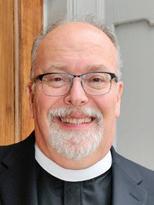
The Rev. Stephen P. Starke is pastor emeritus of St. John Lutheran Church (Amelith), Bay City, Michigan.
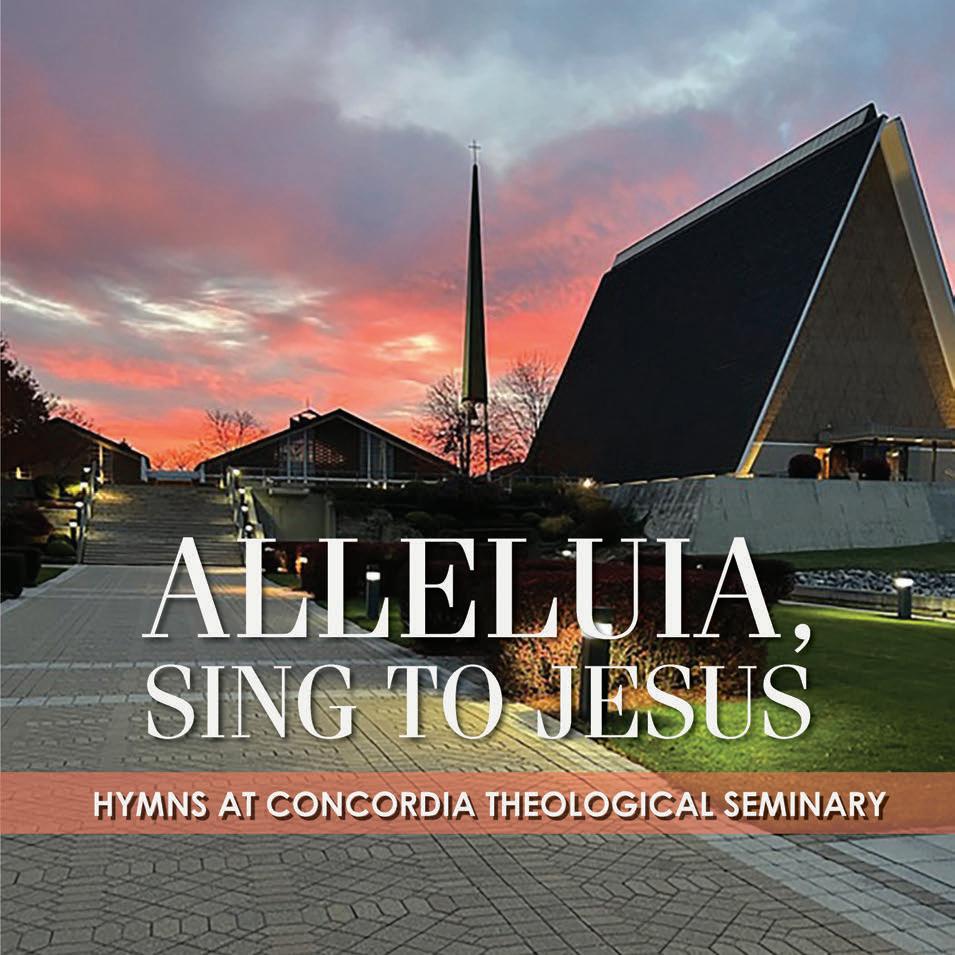
Featuring hymns from Lutheran Service Book recorded live at Choral Vespers and hymn festivals at CTSFW
Streaming versions of the recording are available at Spotify, Apple Music, Amazon Digital Music, and other streaming services. Subscription fees to streaming services apply.
Compact disc versions can be ordered from the CTSFW Bookstore online at bookstore.ctsfw.edu or by scanning the QR code below.

The recording will delight anyone who treasures and appreciates the church’s rich and ongoing treasury of song.
“Faith and confession go hand in glove.”
Concordia Theological Seminary, Fort Wayne (CTSFW), opened its 179th academic year with a new president at the helm, the Rev. Dr. Jon Steffen Bruss. Bruss was installed as the seventeenth president of CTSFW during the service, and succeeds the Rev. Dr. Lawrence R. Rast Jr., who retired as president in May after thirteen years of service.
“God has given our seminary a great gift in Dr. Bruss,” said Rast, who has returned to the faculty as a full-time professor of historical theology. “I am so thankful that we have a faithful president to lead us into a bright future.”
The Rev. Dr. Matthew C. Harrison, president of The Lutheran Church—Missouri Synod (LCMS), served as preacher for the service, focusing on the exhortation in Ephesians 6 to put on the “whole armor of God.” Near the end of his sermon, Harrison voiced a concern about the dangers of thanklessness for the Gospel, then called attention to reasons to be thankful.
“We are not perfect. We never will be. But we have so much to be thankful for. And today, Jon Bruss, we’re thankful for you,” said Harrison. “We’re thankful for this seminary, for the blessings it has brought to so many of us for so long. We’re thankful for the faculty. We’re thankful for all our seminaries. We’re thankful for St. Louis. We’re thankful for Tom Egger. We’re thankful for our presidents of our universities and the theological faculties. We’re thankful for the strong public confession of The Lutheran Church—Missouri Synod. We’re thankful that this faith dwells among us.
“And believe me, I travel internationally as much as anybody else, and the fidelity of this seminary and the
Missouri Synod is a beacon for millions around the world.”
The Rev. Dr. D. Richard Stuckwisch, president of the LCMS Indiana District, presided over Bruss’s installation. Several CTSFW faculty members read Scripture verses on the Office of the Holy Ministry, including a passage from 2 Timothy 4, from which CTFSW’s motto, “Preach the Word,” is drawn. After Stuckwisch read a full description of the Seminary’s mission, Bruss offered his solemn promise to “instruct and guide the students of this seminary in accord with its mission.”
In his first official act as president, Bruss declared the opening of CTSFW’s 179th academic year. Shortly thereafter, he presented a presidential address on the meaning of the name of the seminary, Concordia, focusing on the inseparable nature of faith and confession.
“Faith simply can never be apart from confession,” said Bruss. “‘I believe.’ That’s faith. Saying it out loud? That’s confession. Faith and confession go hand in glove.”
Bruss concluded his “small apologia” for the Lutheran Confessions with implications for the seminary he now leads.
“Let us never, ever tire of our Confessions, our Book of Concord, our Concordia. Instead, as a seminary, let’s press into it. Because the more we press into our Book of Concord, the more will we press into the Scriptures. And the more that we press into the Scriptures, the more will we find in our Confessions the deposit of faith and the pattern of sound words.

To watch a recording of the installation and opening service, visit our CTSFW Youtube channel at ctsfw.edu/youtube or scan the QR code.
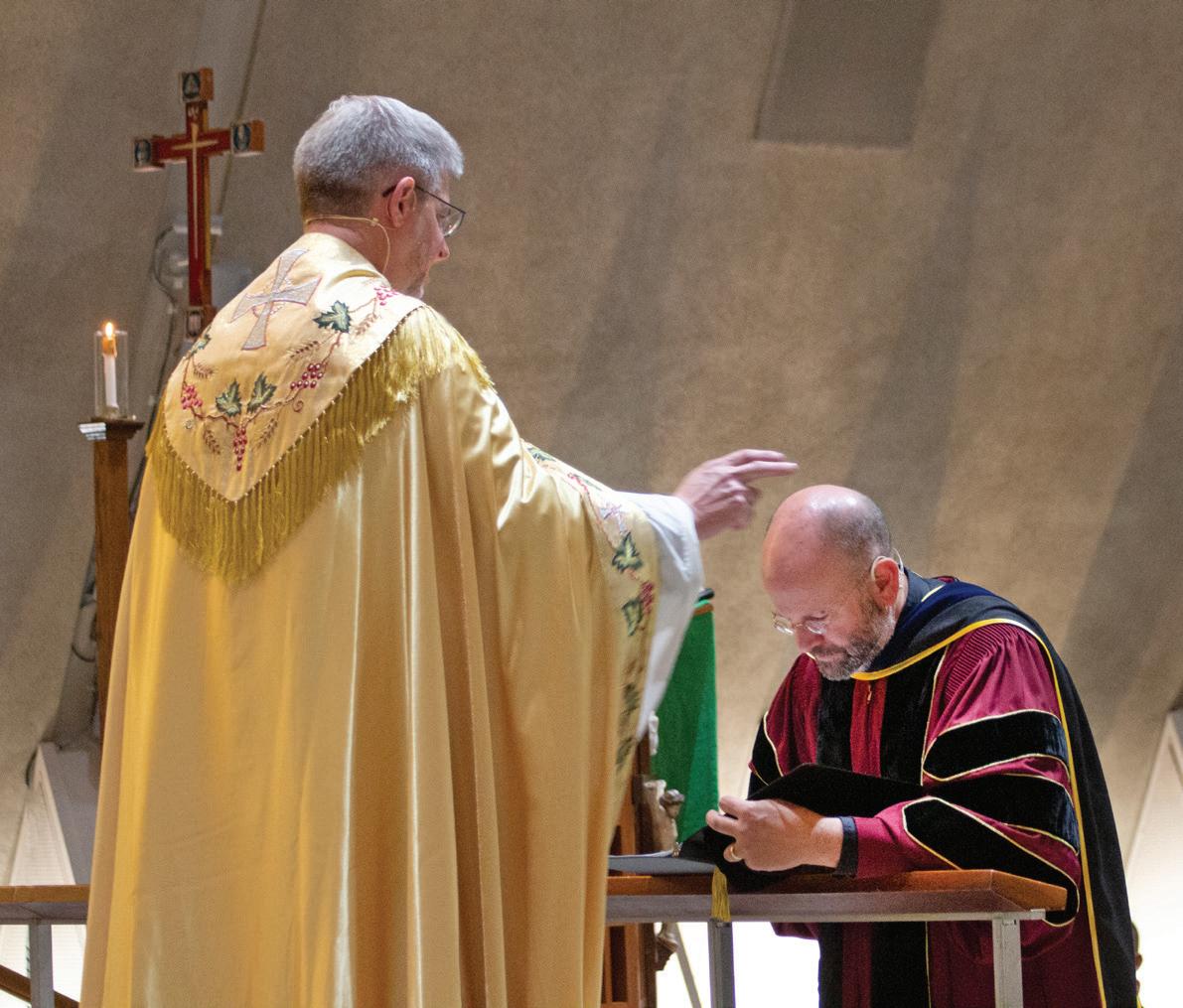
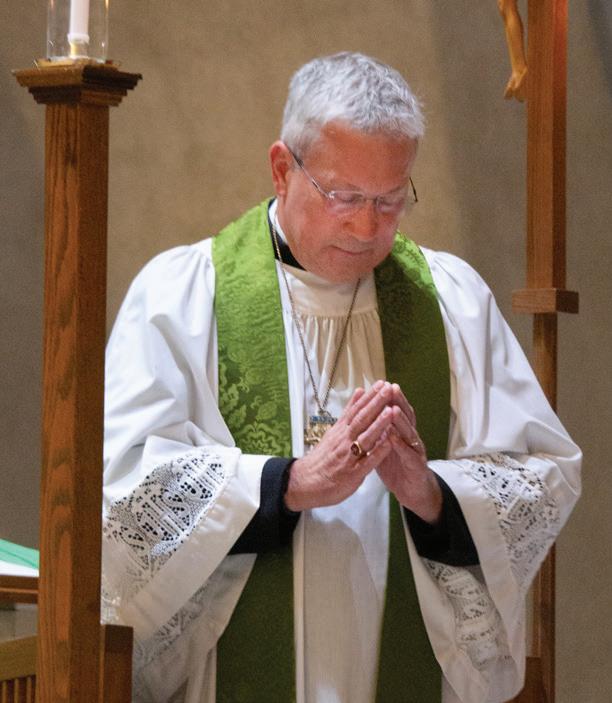

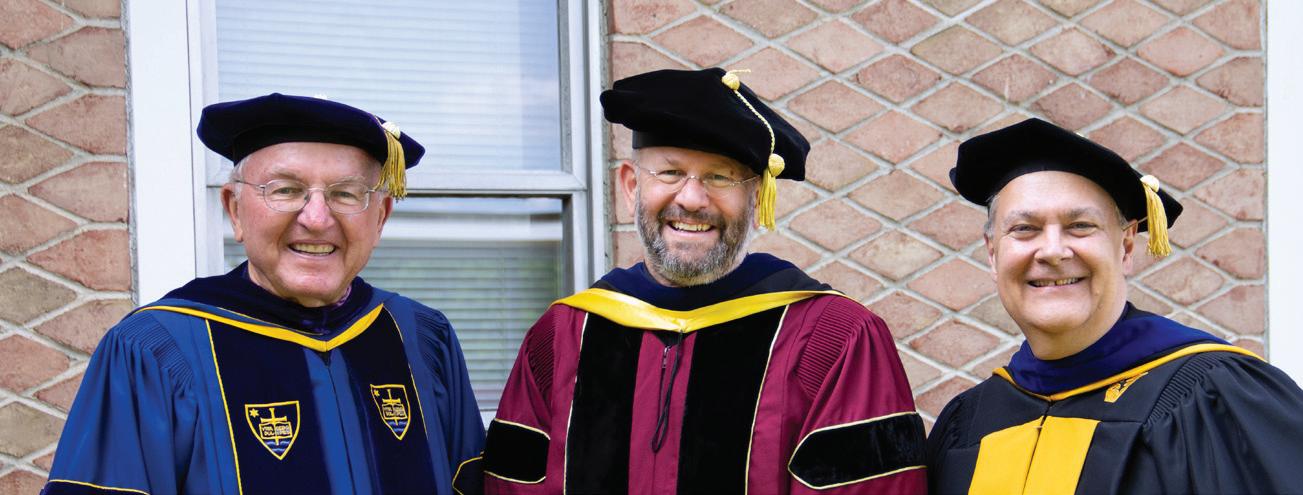
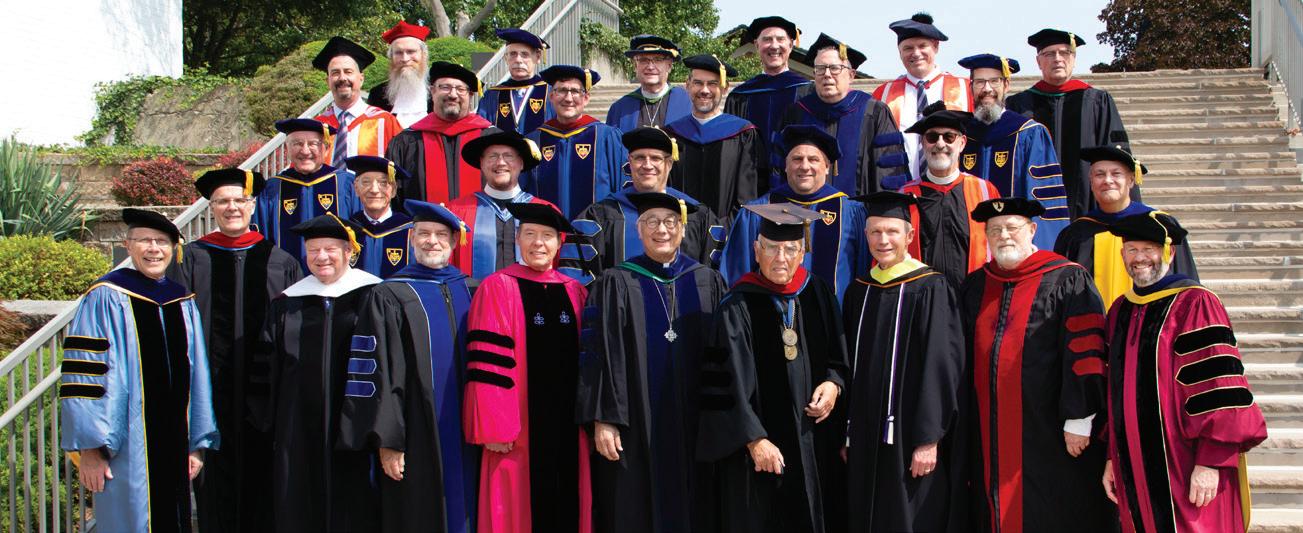
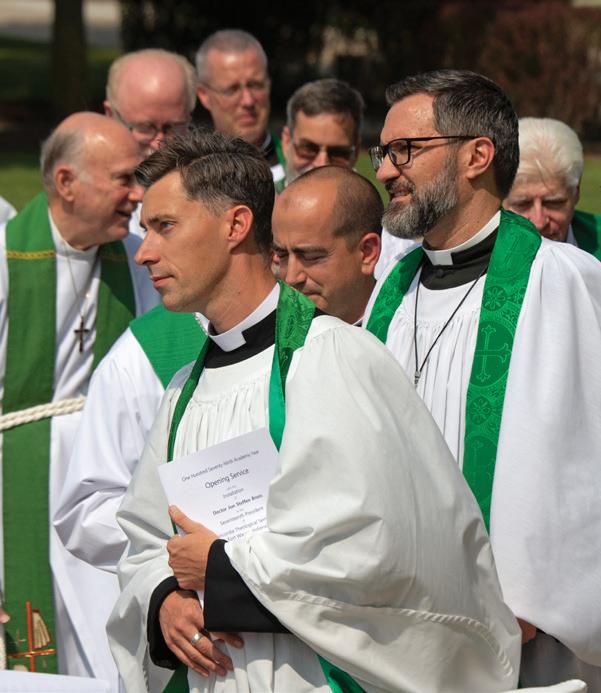
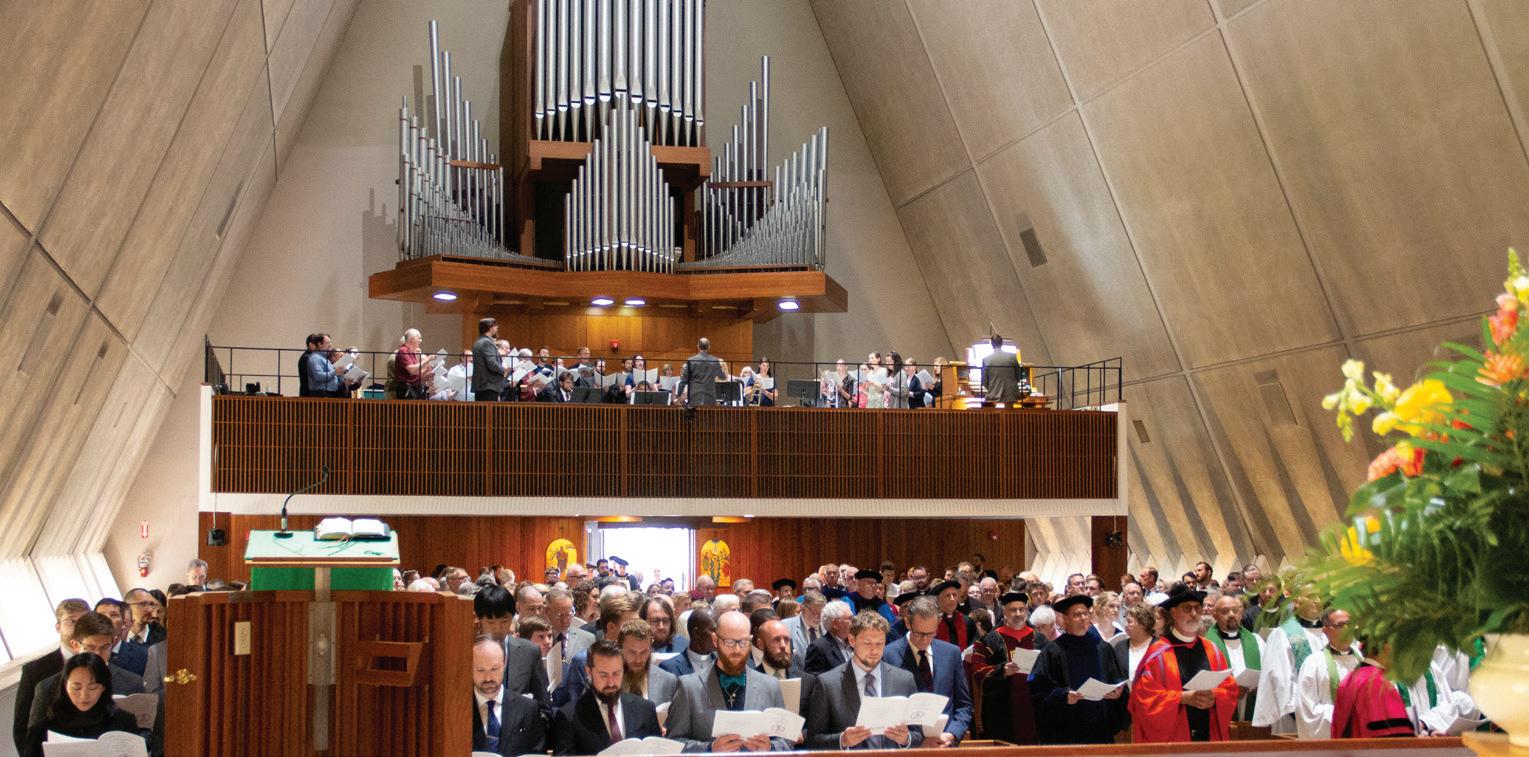


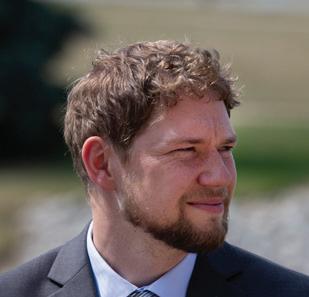


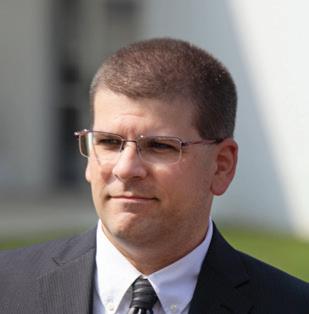

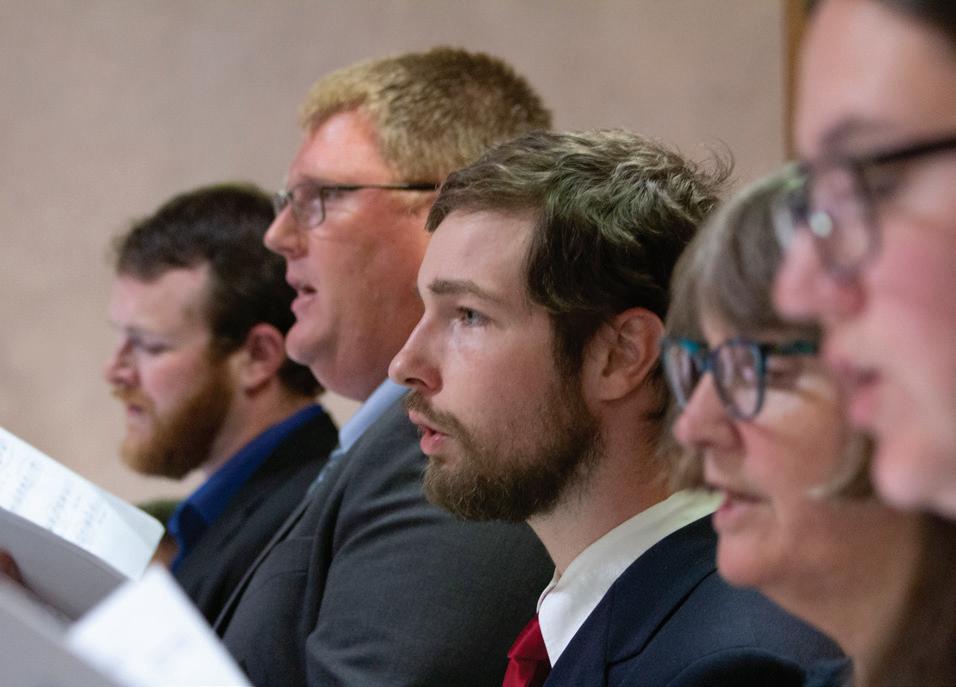
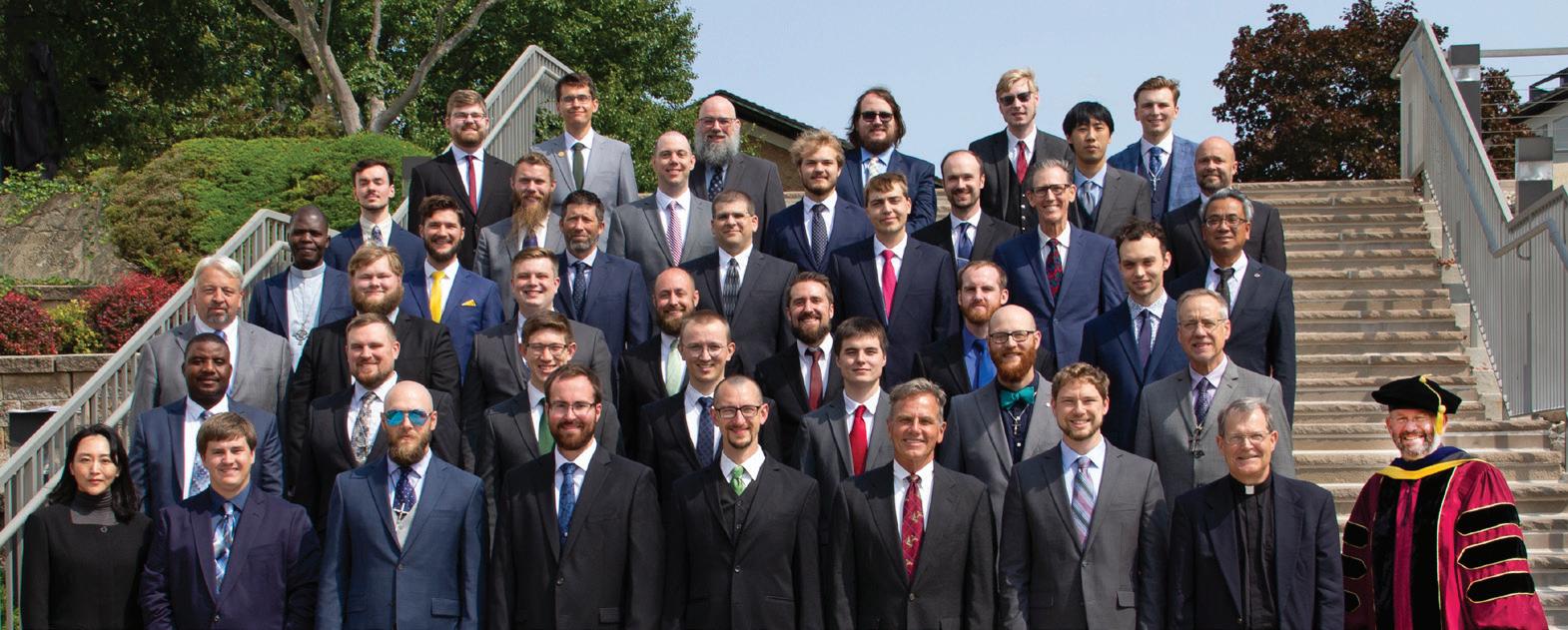
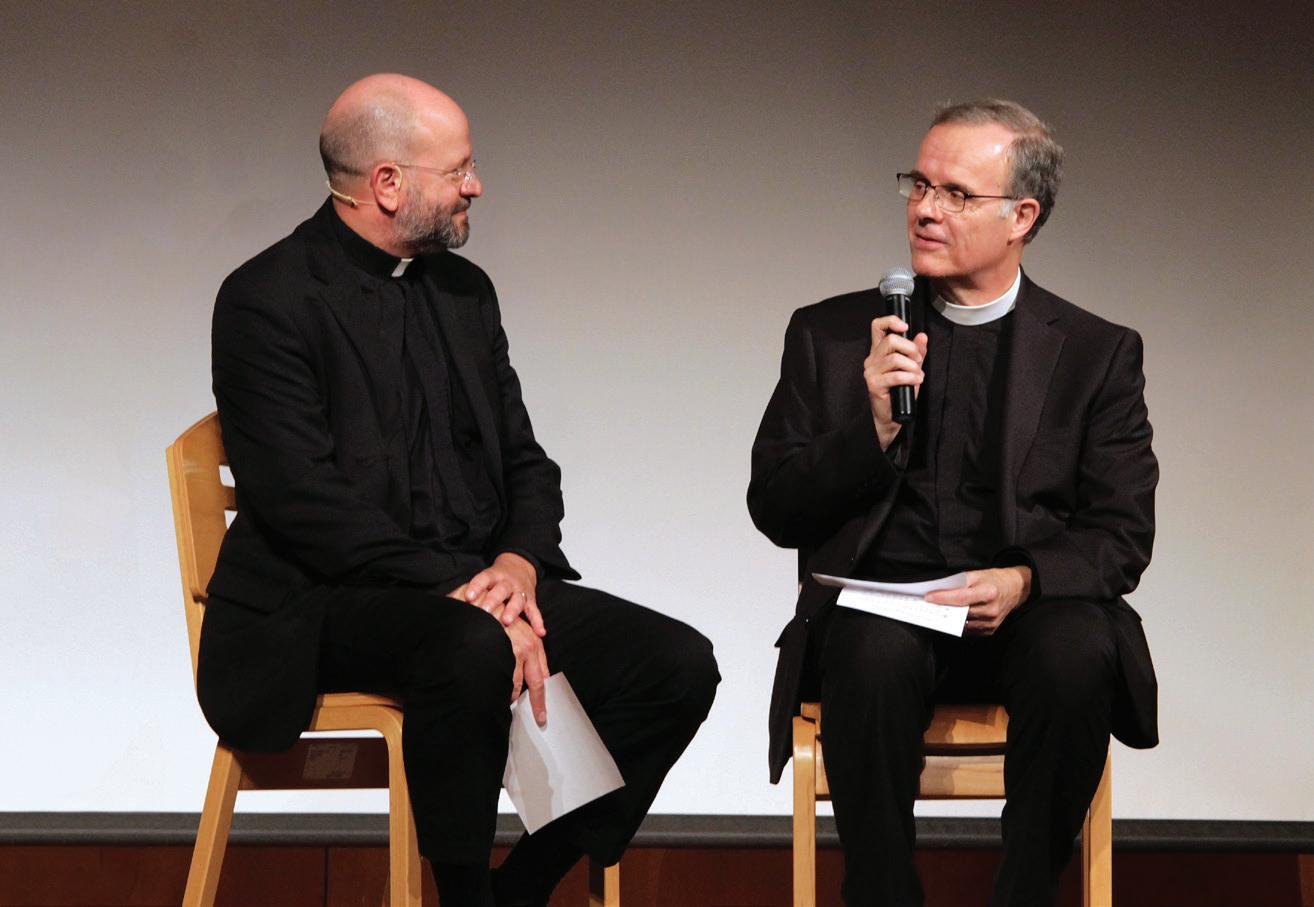
Concordia Theological Seminary’s new president, Dr. Jon S. Bruss, fielded questions in Sihler Auditorium at two friendly Q & A sessions in the week surrounding his installation as CTSFW’s seventeenth president. The first event was moderated by Dr. Paul Grime, Professor of Pastoral Ministry and Missions and Dean of the Chapel, while the second was moderated by Rod Stewart, a fourth-year seminarian and president of the student body. Following are a few of Dr. Bruss’s responses to questions he fielded at those events.
Lots of institutions have a characteristic hymn. I taught at Bethany Lutheran College for a decade. The hymn that was characteristic of that institution was “On My Heart, Imprint Thine Image.” So I thought to myself, “Would it not be good to have a hymn that characterizes our Seminary?” “May God Bestow on Us His Grace” is Luther’s benediction hymn. Take a look at this first stanza. It’s just great. [For the text, see the president’s letter in this issue.]
This so nicely summarizes what it is that we’re up to as an institution. The hope and aspiration of our seminary is that our graduates would go out with that glorious message of the Gospel to the four corners of the earth, from Fort Wayne, Indiana, to Nagercoil, India, and bring the saving health of Christ to the nations.
Dr. Grime was really gracious to me when I was first here. He told me there was a tradition of having one person

preach three sermons during Holy Week. This was my first year of teaching, and I thought, “Oh my goodness. Three sermons during Holy Week. That’s going to be a steep climb.” But I loved it. The reason he did it was to help me during that first year away from the parish.
The preaching task in the parish is really wonderful. I have so much respect for the sole pastors who preach fifty-two Sundays a year, all the festivals, and then get into Lent and Advent on top of it. It’s a huge undertaking.
I also miss the teaching. I miss the flexibility I had in the parish. If I didn’t think we were getting where we needed to be, and I planned for fifteen weeks, we would just extended it for another two, three, or four weeks.
I’ve been totally impressed by the wide diversity of real gifts, both on the faculty as well as among the staff and in the student body.
It’s also great to see how devoted new students are to our Confessions and to all the teachings of the Scriptures. I haven’t found a heretic here yet, and I’ve been looking for two years.
Technology has its place. In our Theologia course, for example, we added a new unit this past year on the art and architecture of Baptism, and it was really great to have the technology to put together a slideshow and show the students historical ways in which Baptism had been thought of and administered and portrayed in the art and architecture of the church.
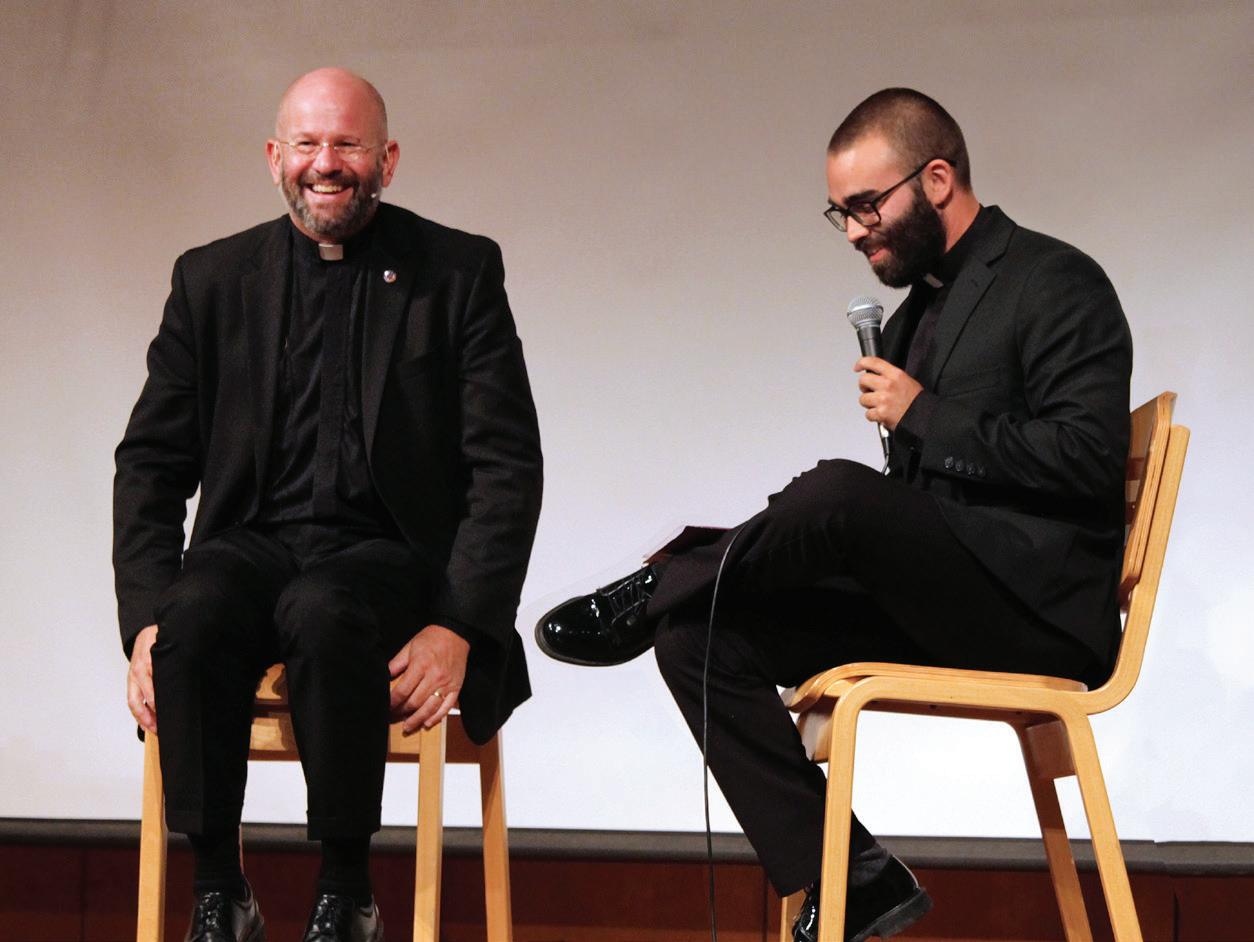
But the bottom line, particularly in the education of church workers, is that face-to-face education is the way to go. God wishes to encounter His people face-to-face. He does it through water. He does it through bread and wine. He does it through the lips of your preacher. I think we ought to model and embody that face-to-face interaction in the teaching of theology and formation of pastors. That’s another way of saying, “Thumbs up for residential education.”
When you go back home, think about the boys in your congregation. See who looks like he might have the aptitude to be a pastor, and you encourage him. That would go a long way. A cool twenty-three-year-old guy from the seminary telling a ten-year-old, “You should think about being a pastor”—that will stir the imagination.
I think a lot of times, with congregational issues—when you get so wound up about your orthodoxy and in what’s being taught, what’s being believed in the congregation, what’s being practiced in the congregation—ninety-nine times out of 100, in my experience, the ego of the pastor is involved. He’s uncomfortable with what others looking in from the outside might see going on in his congregation. That is not a good way to conduct a ministry. You’ve got to go in there where the people are at. And if you want it to be different, then who’s going to do it?

You? No. The Word of God. Your responsibility is simply putting the Word in front of the people and instructing them in the faith. Then let the Word do it. And you’ll know the Word’s done it when it’s not you who say, “We’re going to make this change,” but Mr. Mueller comes up to you and says, “You know, Pastor, I really think we ought to move towards closed communion, don’t you?” You say, “You know what, Mr. Mueller? I think I agree with you.
Then the Word of God has done it. That’s the way to go. That’s what you should learn here at the Seminary.
The ideal mindset of a pastor is utter confidence in God’s Word and our confession to carry the day, and utter humility in oneself. I cannot tell you how far that goes in the ministry.
At the start of my ministry some thirty years ago, I used to get so nervous preaching. And you know why I got nervous preaching? Because the sermon was, from my perspective, going to be about Jon Bruss and Jon Bruss’s performance. That’s a terrible thing. So I started praying, adding an additional prayer after the Sacristy prayer, which I had pasted in the front of my hymn book.
The prayer is kind of simple, but it’s a good one. It’s “Lord, grant that this be about your Word and the people and not about me.” The Lord seems to be answering it pretty consistently, which is helpful.
But having that confidence in what we’re bringing—the Gospel of Jesus Christ, the forgiveness of sins, everlasting life—and being able to step out of the way of it and have no ego involved; that kind of thing makes an awesome pastor.

I’m grateful for my education in the ELS, and I’m grateful for my awareness of the Synodical Conference. We really ought to be paying attention to the people in our backyard, and they ought to be paying attention to us.
A band of three is much stronger than just doing theology on your own. And we learned this lesson. We should have learned it in the fifties, sixties, seventies. The ELS and Wisconsin Synod were telling us, “You’re going over a cliff,” and no one cared. Instead, we said, “Shut up, and go home.” And where did it culminate? In almost a near disastrous, utterly damning loss of our theology.
As President Harrison said at the opening service, it’s taken us fifty years to recover, and we’re still recovering. You’re part of the recovery effort. What a great lesson.
One big challenge is recruiting students. Getting strong students here who are “apt to teach” is critical for the life of the church. Another big challenge will be funding capital improvements to our aging campus. We’ve got a lot of work to do there. The first building, the wood shop, was put up seventy-one years ago. The other buildings are all around that same age, and they all need work at this point. We’ve got to tackle that and rally the church around giving you guys an inspiring place to learn theology and be formed as pastors.
As we focus on those things, though, we need to be sure that we don’t forget that “the thing is the thing.” We need to keep at the center the pure Gospel and the pure confession of our faith. No matter what else is going on, that always has to be at the center.

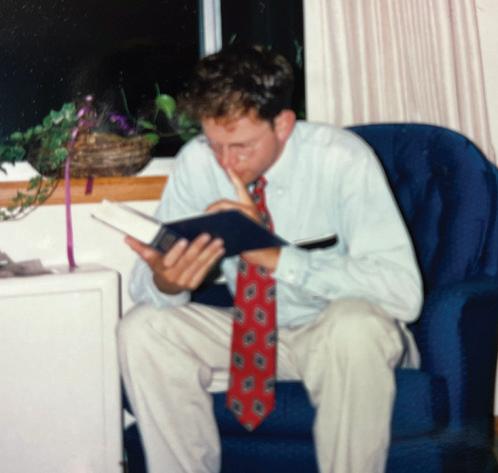
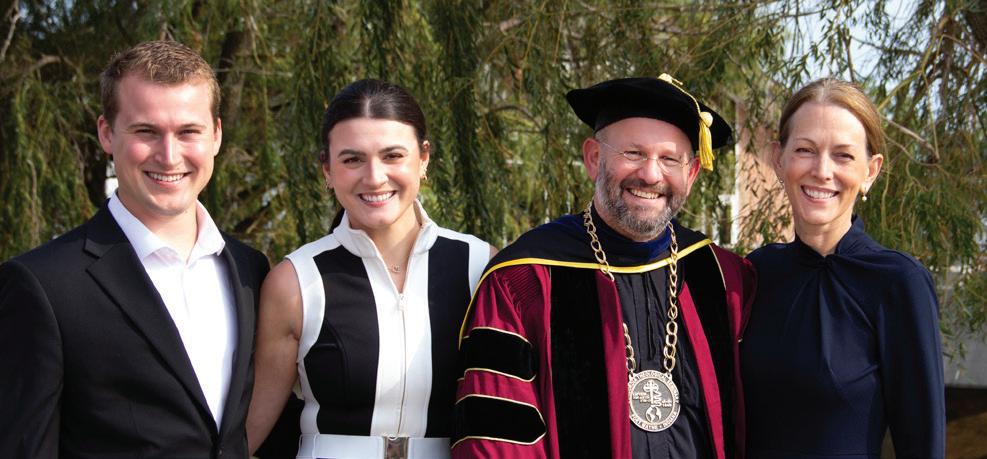
Hometown: Hartland, Wisconsin
Baptized: September 17, 1967; Our Redeemer Lutheran Church, Wauwatosa, Wisconsin
Lutheran story: 8th- or 9th-generation Missouri Synod Lutheran (depending on how you count); parents and three siblings and their families belong to LCMS churches in the Milwaukee area; one brother, James, is a fourth-year seminarian at CTSFW.
Youth sports: Skiing, soccer, sailing
Education: BA, St. Olaf College; MDiv, Bethany Lutheran Theological Seminary; MA and PhD, University of Minnesota
Spouse: Kristine Bruss (married in 1991)
Children: Daughter Ingrid (married to Peter Funk)
Scholarly interests: Northern European Christian Humanism and the Reformation
His “LCMS to ELS and back again” story: Ask him sometime.
Most admired theologian: Philipp Melanchthon and Gregory of Nazianzus, despite their flaws and faults
Favorite classes to teach: Confessions I; any class involving Greek
On the bucket list: Getting back to sailing and skiing before it’s too late

Scan the QR code for a short video introduction to President Bruss. The video can also be found on CTSFW’s YouTube channel
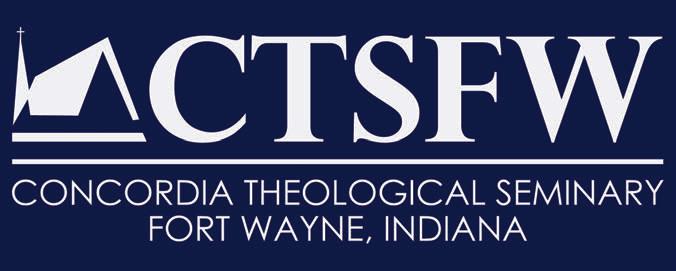
Luther Hostel: Timely Topics for the Life of the Church
November 6–8
Information: ctsfw.edu/LH
Contact: (260) 452-2204
Good Shepherd Institute: Through the Church the Song Goes On November 10–12
Information and registration: ctsfw.edu/GSI
Phone: (260) 452-2204
Organ Recital
Sunday, November 10, 4:30 p.m. in Kramer Chapel
All Saints’ Choral Vespers
Sunday, November 10, 7:30 p.m. in Kramer Chapel

Hymn Festival
Monday, November 11, 7:30 p.m. in Kramer Chapel

Seminary Guild
Tuesday, February 11, 1:00 p.m.
Information: ctsfw.edu/SemGuild or (260) 485-0209
Christ Academy Confirmation Retreat
February 21–23
Information and registration: ctsfw.edu/Confirmation
Contact: ChristAcademy@ctsfw.edu or (800) 481-2155
Seminary Guild
Tuesday, March 11, 1:00 p.m.
Information: ctsfw.edu/SemGuild or (260) 485-0209
Prayerfully Consider Visit
March 20–22
Information: pcv@ctsfw.edu or (800) 481-2155
Lenten Evening Prayer with the Kantorei Sunday, March 23, 4:00 p.m. in Kramer Chapel

Seminary Guild Meeting
Tuesday, November 12, 1:00 p.m. in Luther Hall
Information: ctsfw.edu/SemGuild or (260) 485-0209
Seminary Guild
Tuesday, December 10, 1:00 p.m.
Information: ctsfw.edu/SemGuild or (260) 485-0209
Advent Candlelight Evening Prayer
Saturday, December 14, 4:00 p.m. in Kramer Chapel

Lenten Preaching Workshop
Monday, January 20, 8:30 a.m.–4:00 p.m.
Symposia Series
January 21–24
Epiphany Evening Prayer with the Kantorei
Tuesday, January 21, 5:00 p.m. in Kramer Chapel
Vespers and Organ Recital


Wednesday, January 22, 5:00 p.m. in Kramer Chapel
Symposia Choral Vespers
Thursday, January 23, 5:00 p.m. in Kramer Chapel

Seminary Guild
Tuesday, April 8, 12:00 p.m.
Information: ctsfw.edu/SemGuild or (260) 485-0209
Easter Evening Prayer
Sunday, April 27, 4:00 p.m. in Kramer Chapel
Vicarage and Deaconess Internship
Assignment Service
Monday, April 28, 7:00 p.m. in Kramer Chapel
Candidate Call Service
Tuesday, April 29, 7:00 p.m. in Kramer Chapel
Commencement Ceremony
Friday, May 23, 4:00 p.m.
For full details and updates, please visit ctsfw.edu/Events, scan the QR code, or call (260) 452-2100. Events are subject to change. Services and lectures will be livestreamed at ctsfw.edu/DailyChapel or facebook.com/ctsfw.







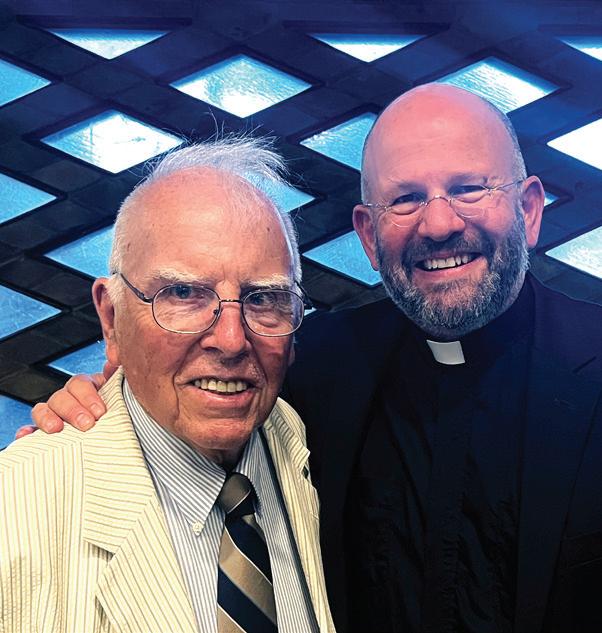
Dr. David P. Scaer is congratulated by CTSFW President Jon S. Bruss after being honored at the Recognition Banquet for Faculty and Ordained Staff September 5.
The Board of Regents of Concordia Theological Seminary, Fort Wayne (CTSFW), granted longtime professor Dr. David P. Scaer a new title this summer: The David P. Scaer Professor Emeritus of Biblical and Systematic Theology. In his remarkable fifty-eight-year tenure on the CTSFW faculty, Scaer served as editor of the Concordia Theological Quarterly (1969–1994; 1999–2024), academic dean (1984–1989), and chairman of systematic theology (1989–1993, 1996–2019). He organized CTSFW’s annual Symposium on the Lutheran Confessions from 1978 to 2024 and served for nine years on the Commission on Theology and Church Relations of the LCMS (1998–2007).
“Dr. Scaer has had a tremendous impact on this Seminary as a professor, conference organizer, and administrator, and on the Church at-large through his many publications, speaking engagements, and his personal example as a faithful confessor,” said Dr. Jon S. Bruss, CTSFW president. “He has animated the faithful ministry of thousands of pastors and informed the piety of countless Lutherans throughout the world.”
Scaer served as pastor at congregations in Gillespie, Illinois, and Rockville, Connecticut, before joining the Seminary faculty. He continues to research and write; his most recent publication, Without the Shedding of Blood, was published by Ad Crucem in 2024.
In September, the Board of Regents appointed Dr. Gifford Grobien as the new holder of the David P. Scaer Chair of Biblical and Systematic Theology. Grobien, who has taught systematics at CTSFW since 2012 and was advanced in rank to full professor last February, presented a public lecture October 2 as the new chairholder.
“Dr. Grobien has distinguished himself through his exemplary teaching, publications, and service in the church,” said Dr. Charles Gieschen, CTSFW provost. “He is very worthy of the honor of being appointed to hold this chair.
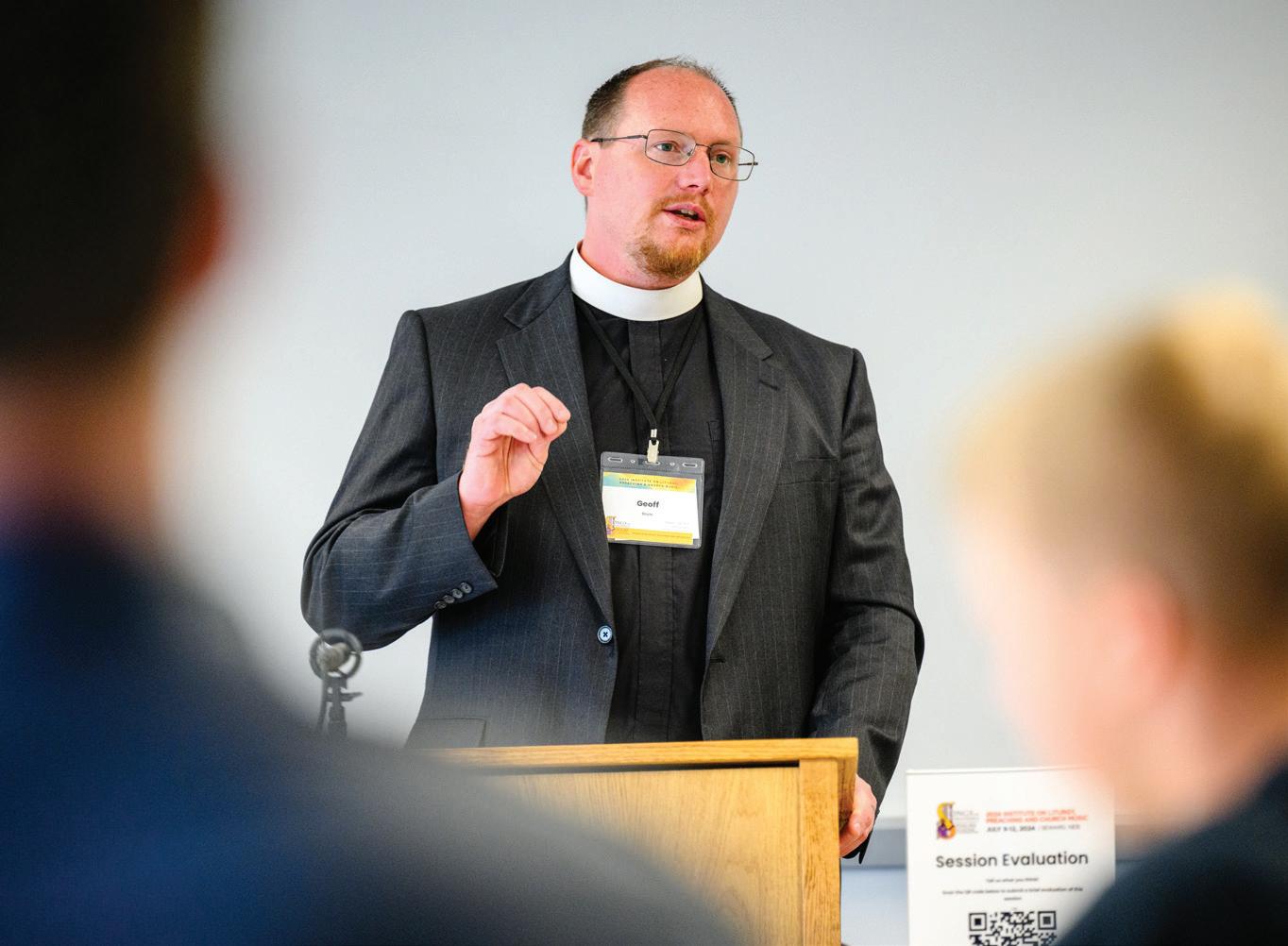
Dr. Geoffrey Boyle, Assistant Professor of Pastoral Ministry and Missions, served as a keynote speaker at The Lutheran Church—Missouri Synod’s (LCMS) 2024 Institute on Liturgy, Preaching and Church Music, held July 9–12 at Concordia University, Nebraska (CUNE), under the theme “Songs of Deliverance: Psalms in the Great Congregation.”
In his keynote, Boyle presented the psalms as a conversation between God and His people and encouraged people to commit the psalms to memory. Other CTSFW participants at the conference included Dr. Paul Grime, Dean of the Chapel, and Kantor Kevin Hildebrand.


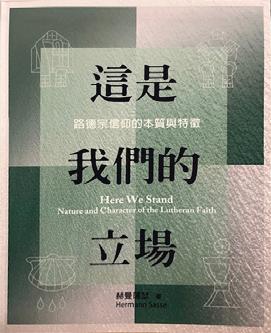

In August, Dr. John Nordling, Professor of Exegetical Theology, and Prof. John Pless, Professor of Pastoral Ministry and Missions, each taught a two-week intensive course at Lutheran Theological Seminary in Pretoria, South Africa. Dr. Nordling’s course covered selections in Matthew, while Pless taught Advanced Homiletics. Both professors, who are frequent travelers to South Africa, described this trip as particularly rewarding.
“It is a joy to witness the many good things that are happening at LTS,” said Pless. “It’s inspiring to see God’s Work here as his lively Word goes forth.”
Pless has also authored a new book, Notes on the Church Year, as well as the introduction to the Chinese translation of Hermann Sasse’s classic book, Here We Stand. His book Handling the Word of Truth: Law & Gospel in the Church Today, which has been translated into German, Danish, Portuguese, Turkish, Chinese, and Finnish, is now available in Indonesian.

The Rev. Roger Peters, CTSFW Assistant Director of Library and Information Services, and Prof. Robert Roethemeyer, the Wakefield-Kroemer Director of Library and Information Services, received honors in August from the Private Academic Library Network of Indiana (PALNI). Peters was inducted into PALNI’s Hall of Fame for his consistency in collaboration and innovation, engaging with colleagues from across PALNI to improve the quality and efficiency of services across the consortium. Roethemeyer received the Outstanding Achievement Award for Leadership in Deep Collaboration, which recognizes individuals who have demonstrated strong leadership in building, supporting, and advancing the principles of deep collaboration, including contributing time and resources and expanding the concepts of deep collaboration in the past two years. Now in its thirty-first year, PALNI is a nonprofit organization supporting collaboration for library and information services for twenty-four private colleges, universities, and seminaries throughout Indiana.

Rev. Roger Peters, Rev. Prof. Robert Roethemeyer, Rev. Robert Smith, and Wesley Smith gather for a photo with “The Sower of the Seminary,” a giclée by artist Edward Riojas, at the annual Recognition Banquet for Faculty and Ordained Staff September 5. Roethemeyer presented the gift to Smith, who retired in May after thirty-one years of service in the library at CTSFW. Among Smith’s contributions: Building up the CTSFW media server, which now holds 7,916 articles, 734 books, and 7,485 sermons.
CTSFW hosted two exciting international tours this summer: the “Steps of Paul Tour” from June 10–21 and the “Lands of Luther Tour” from July 9–19.
On the “Steps of Paul Tour,” CTSFW Provost Dr. Charles Gieschen and his wife Kristi, assisted by CTSFW staff members Paul and Carrie Kroenke, guided a group of forty-six visitors through cities that St. Paul visited on his missionary journeys. The tour included six of the seven cities mentioned in the Book of Revelation (all but Thyatira) as well as ancient sites in Turkey, also known as Asia Minor. The group also traveled to Istanbul, formerly Constantinople, which is significant in Christian history and home to the famous Hagia Sophia Church, now used as a mosque.
A standout moment of the trip was visiting Mars Hill, where Paul delivered his renowned speech to the Areopagus, as recorded in Acts 17. Gieschen and the group were deeply moved by walking among the archaeological remains of this historic site.
“Walking in the Apostle Paul’s footsteps deepened my appreciation for his focus on urban centers during his second and third journeys.”
“I read passages from Acts, Paul’s epistles, and the Book of Revelation to our group, linking them to the sites we explored,” Gieschen said. “I even walked on parts of the Via Egnatia, the Roman road Paul traveled in the first century, and stood at the port in Neapolis where Paul first arrived in Macedonia.”
The Kroenkes appreciated those moments with Gieschen, who is an expert on the Book of Revelation and is writing a commentary on 1 and 2 Thessalonians. “It was incredible to have him do the readings at the different places we stopped, and to share his expertise,” said Paul Kroenke. “This was the trip to take with him.”
In Thessaloniki, Gieschen arranged a Divine Service with a local family involved in a small LCMS mission there, with the help of Rev. Sorin-Horia Trifa, a Romanian Lutheran pastor. Trifa’s son, Marius-Sergiu, a CTSFW student, joined them. Gieschen preached, and the Rev. Michael Knox, who was on the trip with his family and
whose congregation, Our Redeemer Lutheran Church in Cedar Falls, Iowa, sponsored the service, served as celebrant.
Reflecting on the journey, Gieschen noted, “Walking in the Apostle Paul’s footsteps deepened my appreciation for his focus on urban centers during his second and third journeys. This trip was incredibly educational, and I highly recommend visiting these sites, except for Colossae, where no archaeological work has been done. The insights I gained will greatly enhance my teaching of Paul’s epistles and the Book of Revelation.”
The second tour of the summer, “Lands of Luther,” was held in conjunction with the 25th anniversary of Christ Academy. The Rev. Matthew Wietfeldt, Assistant Vice President of Admission and Christ Academy Director, hosted the tour of Germany with his wife, Jenna. Nineteen people, including two Christ Academy high school students and their mother, participated in the tour, exploring key Lutherland and German cultural sites such as Berlin, Wittenberg, Eisleben, Erfurt, Leipzig, Dresden, Nuremberg, Augsburg, the Dachau concentration camp, and Munich.
“The trip allowed us to visit places I had only read about before,” Wietfeldt said. “Now, when I teach or speak about Luther at Christ Academy, I can share my personal experiences from Germany.”
Wietfeldt was surprised to find that while the people in the towns they visited revered Martin Luther, they often knew little about his work. “Many people we interacted with focused more on the man than his message,” he noted. “Luther aimed to bring the freedom and hope of the Gospel to the entire Church. We must not forget that.”
Wietfeldt described the trip as “amazing” and highly recommended CTSFW tours to anyone interested. “We not only saw incredible sites but did so with a brilliant guide, Elizabeth, and with people who deeply cared about their faith. We began each day with prayer and devotion, including some of Luther’s hymns. It was the perfect way to celebrate Christ Academy’s 25th anniversary.”
CTSFW expects to offer new international tour opportunities in 2025. When a tour is scheduled, you’ll be able to find information at ctsfw.edu.
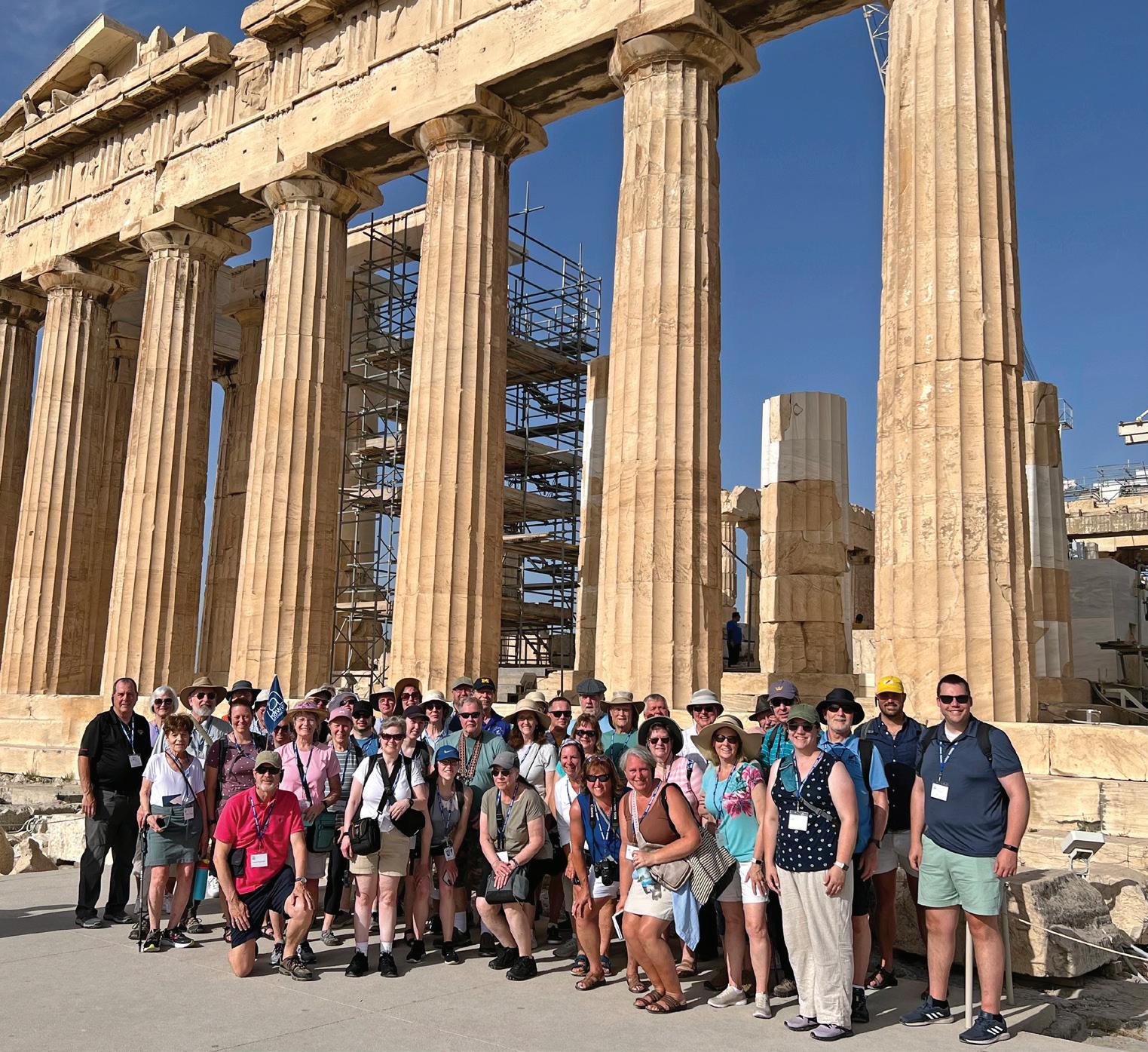


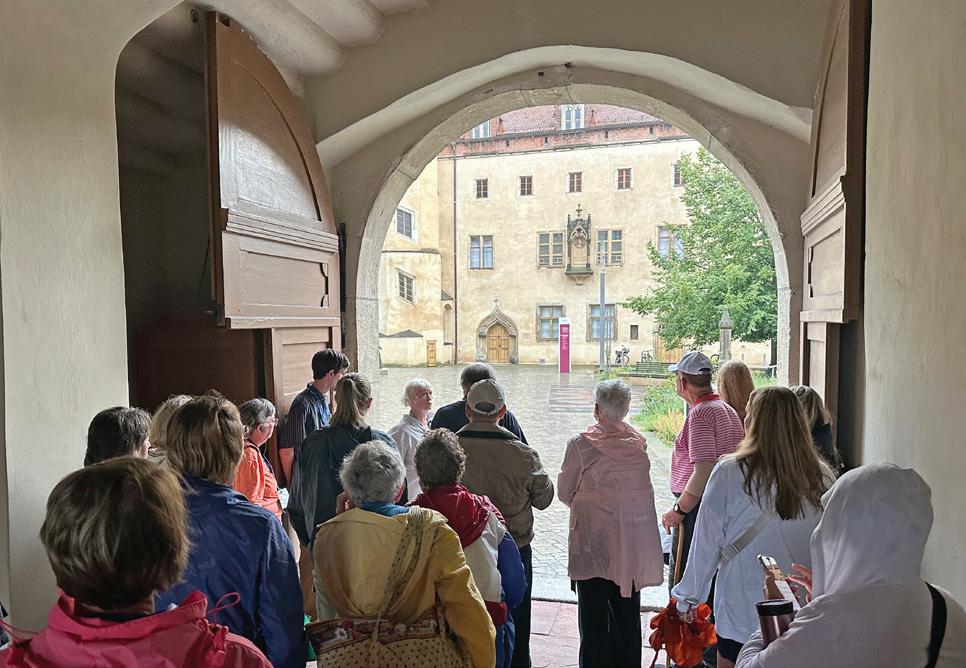

By Matthew Montgomery

It was my first time in Kansas, and I had new people to meet. As I drove up to the house on that chilly, overcast day, I wasn’t sure what to expect. I realized almost as soon as the door opened that I had no reason to worry. Robert (Bob) and Francis (Fran) Ohm were without a doubt two of the most welcoming people I had ever met.
Bob and Fran took me quickly into their comfortable three-season room at the back of the house, and I ended up spending more time there than I thought I would. I enjoyed our visit so much and hated to leave. These new friends felt like old friends.
“When I asked Bob why he and Fran support CTSFW he said, “Because it’s needed.”
Bob and Fran are lifelong Lutherans. Bob spent his grade school years at Zion Lutheran School in Latimer, Kansas (about ninety miles southwest of Topeka), where classes were held in a one-room former bank building during the Great Depression. The Small Catechism was one of the primary texts used throughout those school years.
Bob met Fran (who was born and raised in Tuscaloosa, Alabama) at a Fourth of July gathering in 1952 in Washington, DC; Fran had to be persuaded to attend. It’s safe to say that Bob was glad she was there, as this year they will celebrate their 72nd wedding anniversary. During their marriage they lived in Kansas and Fort Wayne, while Bob worked for both Magnavox and Boeing. After Bob retired from Boeing, they had homes in both places (since they loved them both), traveling back and forth from Kansas and Indiana until their health would no longer allow them to do so.
While they were in Fort Wayne, Fran started volunteering at CTSFW, assisting in the Financial Aid Office and other departments. During that time, Bob and Fran met Dr. Dean Wenthe and got to know him. Truth be told, they got to know many of the faculty and spoke highly about them. Bob mentioned that they helped out at Trinity Lutheran Church in Wichita, Kansas when CTSFW Professor Dr. Geoffrey Boyle was the pastor there, so they know some of our newer faculty, as well. As such, they’ve been involved with and supported the Seminary for many years. When I asked Bob why he said, “Because it’s needed.”
We live in a fallen, sinful world, a world that more and more seeks worldly pleasures rather than the Word of God. Each year CTSFW sends church workers into that world to teach the faithful, reach the lost, and care for all. In order for that to happen, CTSFW needs the ongoing support and partnership of our congregations and their members. Bob and Fran know that, and that’s why they began supporting—and continue to support—the Seminary.
“The need is there, and we need to help others,” said Bob.
Bob and Fran agree that people need pastors who preach the truth of the Gospel. They need pastors who share the Lord’s forgiveness, who rightly administer the Sacraments. They know CTSFW is preparing men to do just that, and as such they’ve supported the Seminary as much as they can. In doing so, they’re not just supporting the work of the Seminary today but investing in the future and guaranteeing their children and grandchildren will have pastors to do the same for them.
They invite others to do the same, whenever and however they can.
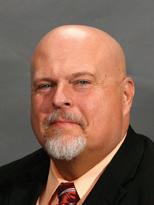
The Rev. Matthew Montgomery serves as an Advancement Officer at Concordia Theological Seminary, Fort Wayne.
“God calls me to care for the wounded.”
Nurture the Living, Care for the Wounded, and Honor the Fallen.” Since 1775 this has been the mission of the United States Army Chaplain Corps. Last year I received orders to spend nine months living out this mission on a rotation with the 2-77 Field Artillery Regiment in South Korea. Concordia Theological Seminary prepared me remarkably well for this task. Moreover, at Camp Hovey near the North Korean border, my day-to-day was filled with unique opportunities for living out CTSFW’s mission of teaching the faithful, reaching the lost, and caring for all.
In Korea I was blessed to establish a Lutheran Divine Service at the Camp Hovey Chapel. The CTSFW Military Project quickly supplied us with devotional materials, the Concordia Organist CD set, Lutheran Service Book, the LSB Altar Book, and a beautiful pulpit Bible. Soldiers half the world away and fifteen hours ahead of their home time zone were able to receive Christ where He promises to come to us in Word and Sacrament. Moreover we were blessed with a liturgy that proclaims our union with the church in heaven and on earth. When we gathered, we sang alongside you with the same words that resound in sanctuaries across the world.
By the grace of God one soldier who began attending our chapel services expressed a desire to join in our Lutheran confession of faith. At basic training the previous year, he had converted to Christianity and was baptized. We began catechesis in South Korea and continued classes when we returned stateside. Thanks be
Please keep our chaplains and military personnel in your prayers. They are God’s instruments of protection. For information on service projects or how to start a military project please email MilitaryProject@ctsfw.edu or call (260) 542-2140.
MONETARY DONATIONS CAN BE MAILED TO: Concordia Theological Seminary Attn: Military Project Coordinator 6600 N. Clinton St. Fort Wayne, IN 46825
to God, he was recently confirmed and received by Rock of Ages Lutheran Church, our local LCMS congregation near Fort Carson, Colorado. After a full year of weekly instruction it was a true joy to assist Pastor Daniel Warner in this confirmation service. In a journey of faith from Korea to Colorado, at last this young man received the Sacrament he had so faithfully hungered and thirsted for.
A rotation to Korea is a far cry from a combat deployment. Nevertheless, God calls me to care for the wounded. We are all wounded by the stain of sin and death. Psychiatric distress, addiction, and suicide are widespread realities in the military community. Soldiers live with moral injury from previous combat tours. Nine months away from home push many marriages over the edge. Whatever the wounds may be, the grace of Christ Jesus is sufficient in our weakness. And when Lutheran chaplains offer comfort and counsel, we are ambassadors of Christ. No matter the circumstance, almost without fail, a soldier in distress will accept a prayer when offered from the chaplain.
I thank God for the CTSFW Military Project, which supports this unique ministry in ways the government simply cannot. Thank you for your prayers, your encouragement in the Gospel, and for supplying valuable worship and catechetical resources that carry the life-giving Gospel of Jesus Christ to soldiers around the world.
In Christ, CH (CPT) David Wurdeman (CTSFW 2019) Battalion Chaplain of 2-77 Field Artillery Regiment
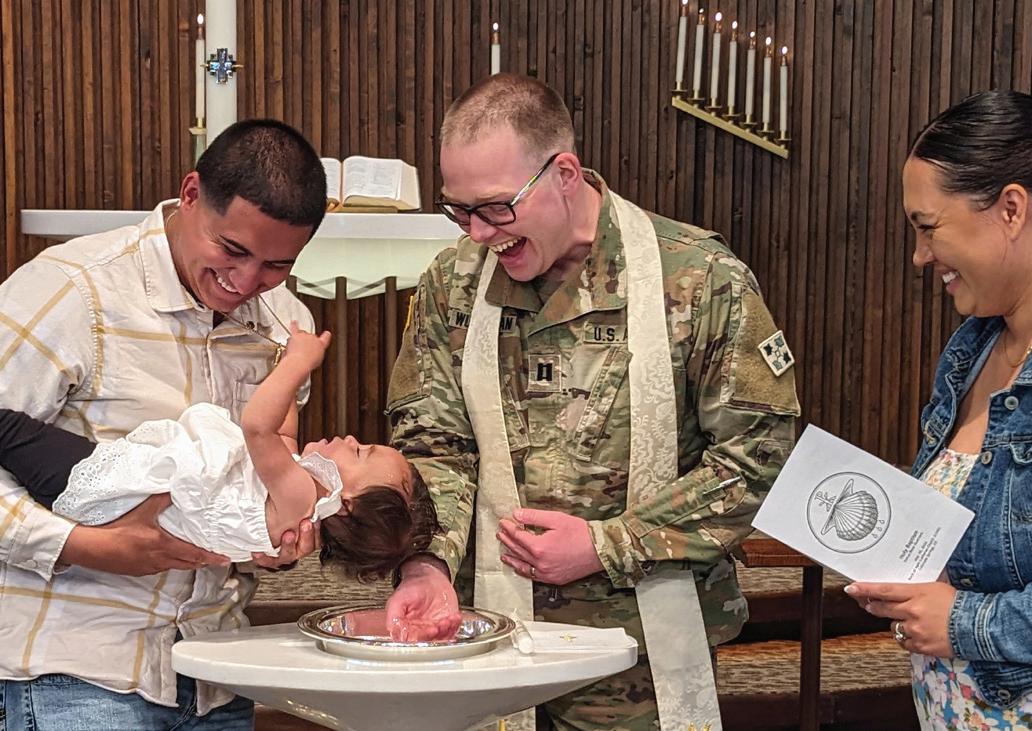
Summer Greek students were welcomed to CTSFW with an ice cream social June 9. The intensive ten-week Greek course prepares students who have had either no Greek instruction or need a refresher course to meet CTSFW’s pre-seminary requirement. By the end of the course, students are required to be able to read and translate 1 John and be well-prepared to read and translate the entire New Testament. Summer Greek wrapped up August 16.
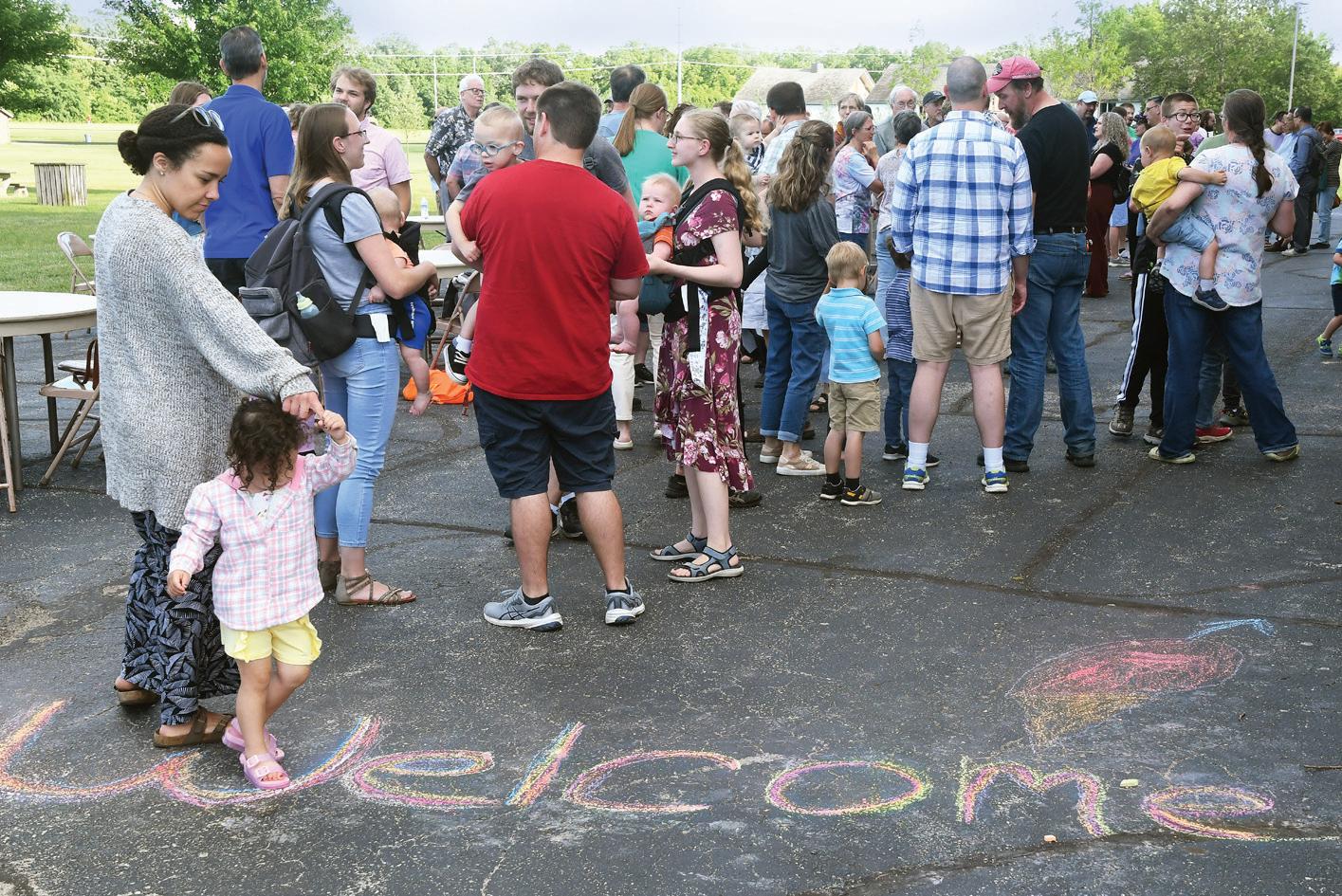
CTSFW Kantor Kevin Hildebrand instructs a beginner organist during CTSFW’s Beginner Organist Workshop held June 3–7. Thirteen organists honed their skills during the workshop. The following week, eighteen organists with more advanced skills attended CTSFW’s Intermediate and Advanced Organist Workshop. Dr. Paul J. Grime, Dean of the Chapel and Deaconess Sandra K. Rhein, Sacred Music Educator in Asia for The Lutheran Church—Missouri Synod, also served as instructors.

Students join together in song in Kramer Chapel during Christ Academy High School (CAHS), held June 16–29. Registration for CAHS, which marked its 25th anniversary this year, was at maximum capacity. In addition to worshiping together in Kramer Chapel, attendees explored the Lutheran faith in depth and participated in community service and social activities. The next CAHS will be held June 15–28, 2025.

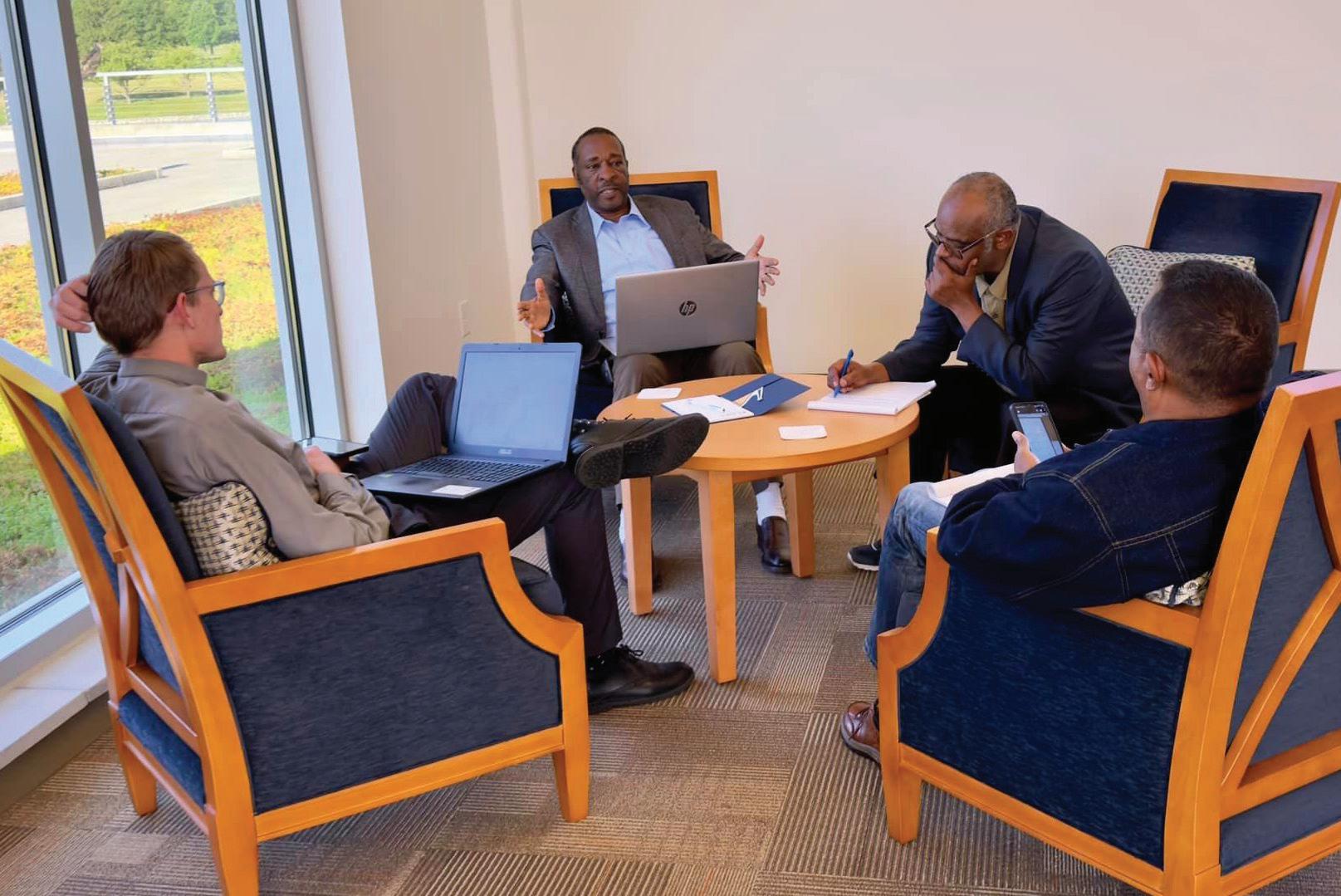


Participants in the Lutheran Leadership Development Program (LLDP) of the International Lutheran Council (ILC) work together in Kroemer Library on a case study. The LLDP met at the Seminary in late June and early July for two one-week courses, “Responding to Contemporary Issues and Neo-Pentecostalism,” taught by CTSFW Professor John Pless and “Ecclesial and Organizational Leadership,” taught by the Rev. Teshome Amenu, General Secretary of the Ethiopian Evangelical Church Mekane Yesus (EECMY).
President Eden Keefe (center), LWML Indiana District President Sarah Rippy (right), and LWML Carolinas District President Paula Daniels (left) were at CTSFW for the presidential installation September 8. The LWML supports CTSFW students and families in a variety of ways, including gifts to the Food & Clothing Coop and Christmas Marketplace.
Students gather in President Bruss’s office for the new “Colloquium Fratrum,” an opportunity to talk for an hour about theology, pastoring, or whatever else is on their minds. Colloquium Fratrum will be held weekly at various times whenever Dr. Bruss is on campus.
At Concordia Theological Seminary, the job of admission counselor is, in many respects, the same as you would find at most colleges and universities. Counselors travel, host visits, provide information about the school, and walk prospective students through the steps in the admission process.
What makes the job different at CTSFW is the centrality of the discernment process. For the rostered church workers on the team—including Rev. Matthew Wietfeldt, Assistant Vice President of Admission, and admission counselors Rev. Brian Stark and Deaconess Katie Aiello—their most important responsibility is serving as a trustworthy guide for students who are contemplating the vocation of pastor or deaconess.
“The admission counselor is here to walk alongside our prospective students as they discern possible studies at CTSFW,” said Wietfeldt. “We care for them pastorally as they go through this process and help them identify strengths and weaknesses they may have for the role that the Lord may be calling them to do. If this is what they feel called to do, we show them the path to get there.”
“The admission counselor is here to walk alongside our prospective students as they discern possible studies at CTSFW”
Stark adds that it helps to have walked the same path as the prospective students.
“It’s a good thing that our counselors are ordained pastors, because a lot of guys have questions about the office, and we’ve been there,” he said. “Through many conversations, we establish trusting relationships that allow us to become a resource and a mentor for them— the whole person—through all the concerns, questions, challenges, and obstacles they might face.”
Aiello, who works with prospective deaconess students, echoes the importance of getting to know prospective students in a personal way. “What are they doing in their life right now? What has led them to this point? What things do they hope to do as a pastor or deaconess? Sometimes people have concerns or are
working through some things and aren’t sure if the timing is right, so we help them determine whether they should come now or wait and address some of those issues first.”
“This isn’t just like switching from one school to another,” Aiello continued. “It’s a life change that affects more than just the student, especially if they’re married or have children. We walk them through the resources we have that can make that transition easier.”
The counseling job sometimes involves suggesting a different path for students, and that, too, requires a lot of pastoral guidance. “This isn’t about closing the deal,” said Stark. “Sometimes a guy is really passionate about coming to the seminary, but it becomes clear during the process that the timing isn’t right, or that his vocation lies elsewhere. In those instances, I’ve had to very pastorally lead them in another direction.”
For this process to work as intended, building good relationships with prospective students is essential, and the counselors say it’s one of the real joys of the job.
“This isn’t about just gathering information and filling out forms,” said Wietfeldt. “We really get to know these individuals—their gifts, their skills, and their families as we walk them through the discernment process. Each story of how the Lord has crafted them to this point and is using everything in their lives to bring them to the seminary is unique. It’s all about the church raising up individuals, and our seminary working in cooperation with that.”
The other members of the Admission team, including Administrative Assistant Carrie Kroenke and Relocation Coordinator Renita Nahrwold, also prioritize strong relationships. “I get to be a ‘mom’ to these students as I work with them through the application process,” said Kroenke. “I make sure that they get everything done and done correctly so they’re ready to go to the Admission Committee. I develop a vested interest in them and their lives and get excited about thinking of them here at CTSFW and what they’ll do for the church when they leave.”
Nahrwold, a mother of three and grandmother of twelve, has worked with families for over two decades, helping them find housing and connecting them with services they might need, including schools, doctors, employment, and child care. “I try to put myself in their shoes and show them a lot of compassion. When I can connect students with what they need in Fort Wayne, it really warms my heart. It’s a lot of work but it’s worth it



“My admission counselor, Pastor Wietfeldt, made it abundantly clear that he wanted what was best for me and my family as we discerned our next steps in life. He didn’t pressure me to choose Fort Wayne over St. Louis but instead helped me see the different options laid before me. I wasn’t just another number in an Excel sheet to him but rather a young man needing guidance. My family and I will always appreciate Pastor Wietfeldt’s help as we transitioned from undergrad to seminary.”
Seminarian Michael Speckhard Valparaiso, Indiana; Sem IV
because I want them to be happy while they’re here.”
When those students leave Fort Wayne, they’ll do so as faithful servants of Christ, formed to share His truth, love, and mercy with those in their care.
“As Lutherans, we have the most beautiful confession of faith in the world,” said Stark. “It’s what the world
Ineeds now more than ever. It’s very exciting to be part of the process of the church forming men to proclaim that confession to the world.”
Interesting in learning more about admission at CTSFW? Visit ctsfw.edu/admission or contact the team at admission@ctsfw.edu
n July, the Higher Learning Commission (HLC) informed Concordia Theological Seminary, Fort Wayne (CTSFW), that it had successfully completed its Open Pathway Assurance Review with no recommended monitoring. HLC, an institutional accreditation agency recognized by the U.S. Department of Education, has accredited CTSFW since 1981. “Coming in the middle of our ten-year accreditation period, this is excellent news, “ said CTSFW President Dr. Jon S. Bruss.
The Open Pathway is one of two options institutions have for maintaining accreditation with the HLC. The ten-year HLC Open Pathway includes a Year 4 Assurance Argument Update, which for CTSFW occurred during the 2023–2024 academic year. A team of five peers reviewed the Seminary’s update in June. “Accreditation provides both assurance and advancement,” said CTSFW Vice President of Assessment and Accreditation Rev. Prof. Robert Roethemeyer.
The accreditation process evaluates quality and provides a road map for institutional improvements. It assures students that their academic programs meet nationally recognized standards and is required for CTSFW to receive federal funds for student financial aid. It also assures financial supporters that CTSFW is engaged in appropriate educational efforts and that those efforts conform to normative expectations of quality. While it is not an audit, accreditation functions as an external, independent judgment about the strengths and weaknesses of the institution and encourages wise use of its resources and careful attention to its mission.
“CTSFW views the work of accreditation as an opportunity to build on the school’s strengths and discover and implement institutional changes that further the Seminary’s mission to form servants in Jesus Christ who teach the faithful, reach the lost, and care for all,” said Roethemeyer.
By Matthew Machemer
For Christians of all times and places, the hymnal has always been an aid to devotion. One such example is the Book of Psalms, often referred to as the church’s first “hymnal.” Indeed, these early hymns are no trite ditties but songs, prayers, praises, supplications, confessions, and laments that the have been used by Christians in both corporate worship and private meditation for thousands of years. Today all good hymnals and hymns serve the same purpose. Hymns are substantive poetic renderings that teach the faith, give form to our prayers, and incorporate us into the life of God. This makes the hymnal a treasure trove of texts and tunes for all Christians to use both at church and at home.
One of Martin Luther’s earliest Reformation “projects” was the compilation of a small hymnal for the laity of the church. In 1523, Luther wrote,
Following the example of the prophets and fathers of the church, I intend to make German Psalms for the people, i.e., spiritual songs so that the Word of God even by means of song might live among the people.1
This first hymnal was the Achtliederbuch (“EightSong Book”). It included only eight hymns, several of which were written by Luther himself, including “From Depths of Woe I Cry to Thee.” What does this tell you about the importance of this hymn for early Lutherans?
Creed, Lord’s Prayer, Holy Baptism, Confession, and Sacrament of the Altar). Which chief part pairs best with the hymn? Why?
Luther wrote “From Depths of Woe” as a paraphrase of Psalm 130. Many of the stanzas stay very close to the content of the psalm.
LSB 607
Psalm 130
St. 1 From depths of woe I ____ to ____, v. 1
St. 1 Lord, hear my _____. v. 2
St. 1 If _____ rememberest every ____, Who then could ____ ever win? v. 3
St. 4
Review the text of “From Depths of Woe” (Lutheran Service Book, 607). While this hymn is useful for all times of the church year, it is often sung as the “Hymn of the Day” for Ash Wednesday. What about the text makes Ash Wednesday an especially appropriate time to sing this hymn?
And though it ____ through the ____ And till the ____ waken, v. 6
Out of the ____ I cry to you, O ____!
Let your ____ be attentive to the voice of my ____ for ____!
If you, O Lord, should mark _____, O Lord, who could ____?
My soul ____ for the Lord more than ____ for the ____
St. 4 O ____ trust in God your ____ v. 7 O ____, hope in the ____!
St. 5
Martin Luther intended the earliest version of this hymn as a companion to the Small Catechism. Consider the six chief parts of the catechism (Ten Commandments,
St. 5
Though great our ____, yet greater still is God’s abundant ______ ; v. 7
Who will at last His ____ free from all their ____ and ___. v. 8
For with the ____ there is steadfast ___, and with him is plentiful ____.
And he will ____ Israel from all his ____.
Luther’s first draft of “From Depths of Woe” (presumably written late in 1523) was only four stanzas long. The original stanza 2 very closely matched Psalm 130:3–5. Consider those verses of Scripture.
If you, O LORD, should mark iniquities, O LORD, who could stand? But with you there is forgiveness, that you may be feared. I wait for the LORD, my soul waits, and in His word I hope;
By 1524, Luther had expanded “From Depths of Woe” to the five-stanza version we are familiar with today. The reformer had his original stanza 2 and stretched it into our current stanzas 2 and 3 as listed below.
2 Thy love and grace alone avail To blot out my transgression; The best and holiest deeds must fail To break sin’s dread oppression. Before Thee none can boasting stand, But all must fear Thy strict demand And live alone by mercy.
3 Therefore my hope is in the Lord And not in mine own merit; It rests upon His faithful Word To them of contrite spirit That He is merciful and just; This is my comfort and my trust. His help I wait with patience.
In expanding the hymn, Luther gave more room to explore Reformation themes of “grace as opposed to works and the Word rather than rewards.”2 How does stanza 2 speak of our human efforts to earn God’s grace and favor?
Christians are those who are, as the hymn says, “born of the Spirit and the Word” and “now wait for His appearing.” What is the birth to which stanza 4 refers?
(See Titus 3:5–8 and Romans 6:3–4.)
The melody for this hymn (entitled aus tiefer Not) was also written by Luther and is a “superb example of the marriage of text and tune.”3 The melody’s opening line features a dramatic descent on the text “From depths of woe.”
Faced with the futility of our own efforts before God (Rom. 3:23), where can we look for comfort and hope? (See the text of stanza 3.)
How does this feature of the melody help to illustrate the text of the hymn?
Although the word “faith” is not used, what lines, specifically in stanza 4, speak of faith?
In many ways, the music of this hymn may sound foreign to our ears. This is because this hymn is not in a major or a minor mode! It is written in an older mode called the Phrygian mode, which, though exotic to us, was much more common in Luther’s time.
In what ways might this melody communicate the nature of contrition, repentance, and faith by its rare musical mode?
The hymnal is a treasure available to each and every Christian. It contains a wealth of devotional texts and tunes that inform our church services and our prayer lives. These hymns ingrain themselves in us, giving words to our prayers and boldness to our confession.
1 Martin Luther, Liturgy and Hymns, ed. Ulrich S, Leupold, vol. 53, in Luther’s Works, American Edition, vols. 31–55, ed. Helmut Lehmann (St. Louis: Concordia, 1965), 221.
2 Robin Leaver, Luther’s Liturgical Music: Principles and Implications (Minneapolis: Fortress Press, 2017), 146.
3 “From Depths of Woe I Cry to Thee,” by Paul D. Weber in Lutheran Service Book Companion to the Hymns, Vol 1, ed. Joseph Herl, Peter C. Reske, and Jon D. Vieker (St. Louis: Concordia, 2019), 704.
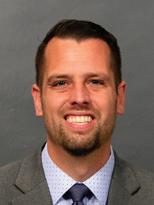
Kantor Matthew Machemer serves as Assistant Kantor at Concordia Theological Seminary, Fort Wayne.




An annual highlight at CTSFW, the Symposia Series is a four-day event consisting of two symposia.
The Biblical Foundation of the Nicene Creed
January 21–22, 2025
The Council of Nicaea 1700 Years Later: Old and New Controversies
January 22–24, 2025
Pastors, get a head start on Lenten preparation and join us for the annual Lenten Preaching Workshop on Monday, January 20. This year’s workshop, “God’s Ordered Love,” will be led by the Rev. Dr. David Petersen.
For more information and online registration for the Symposia Series or the Lenten Preaching Workshop, please visit ctsfw.edu/events.